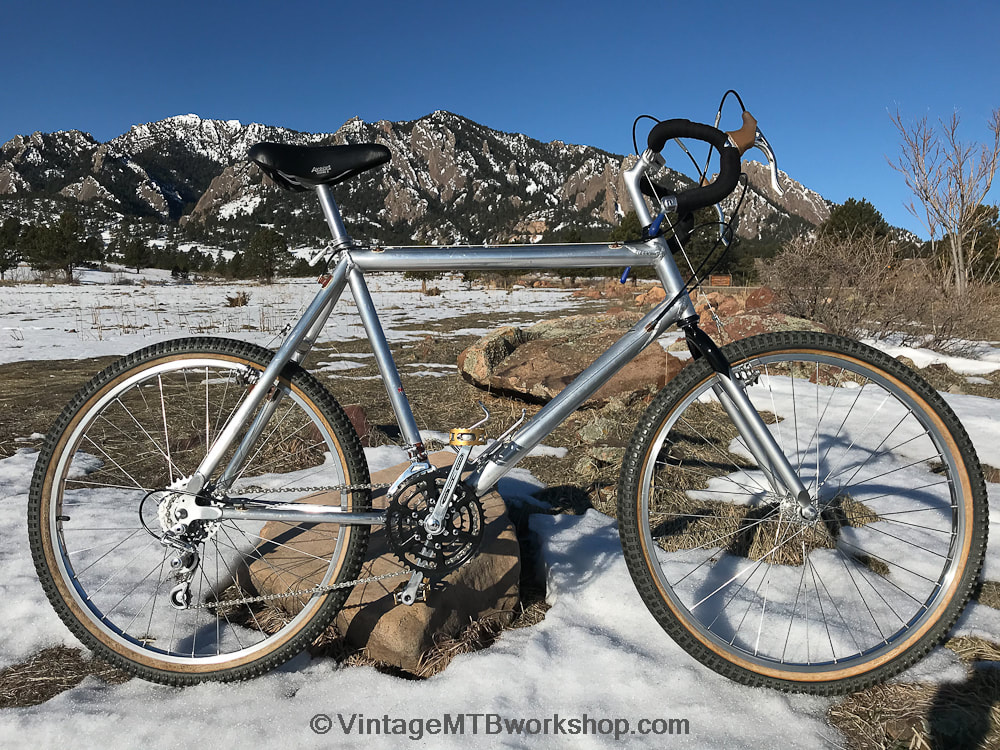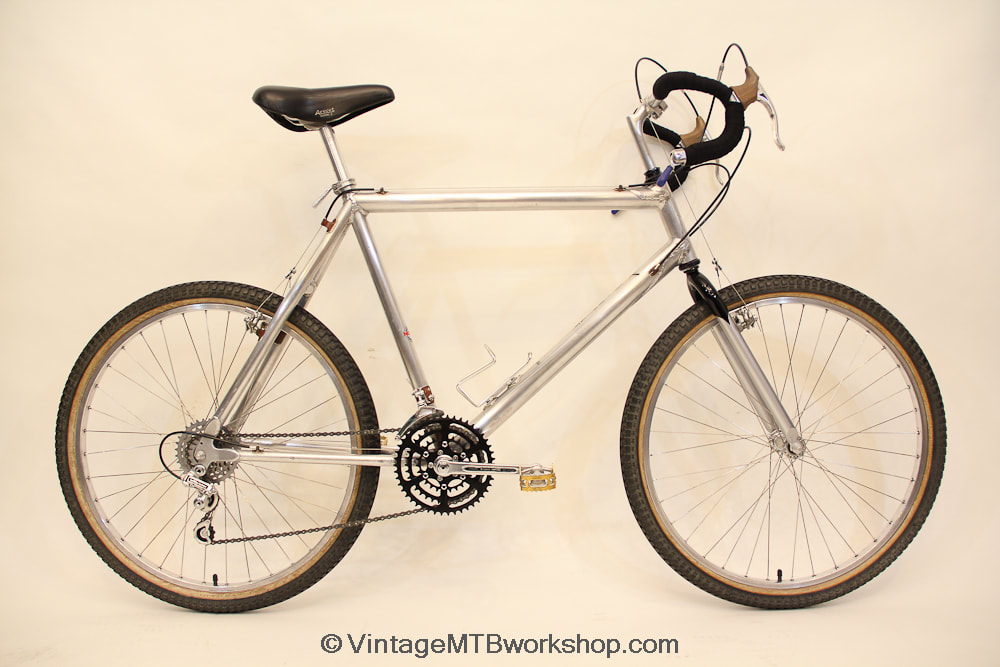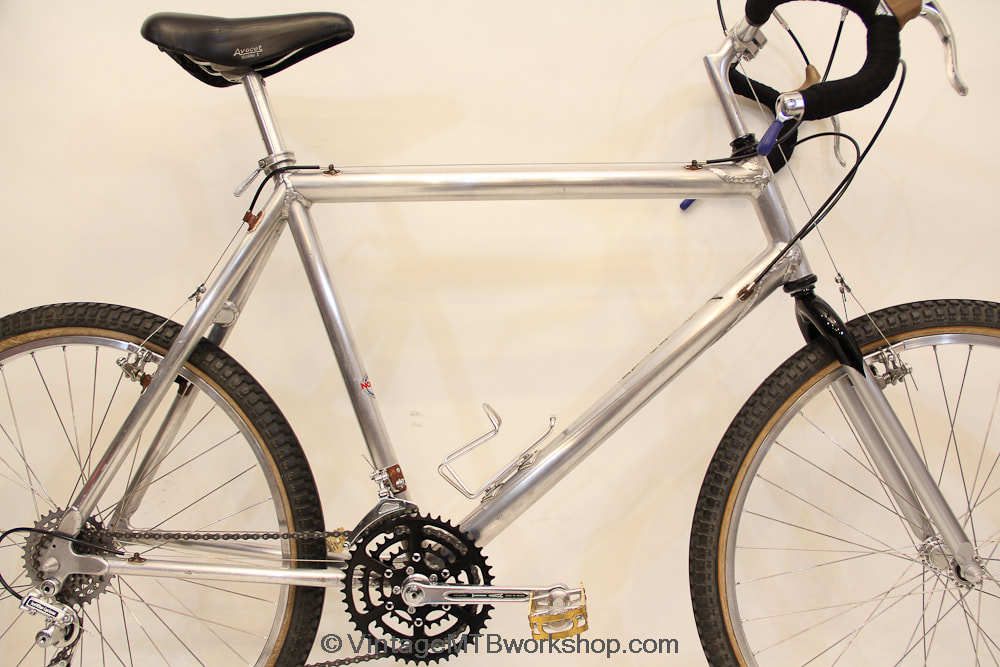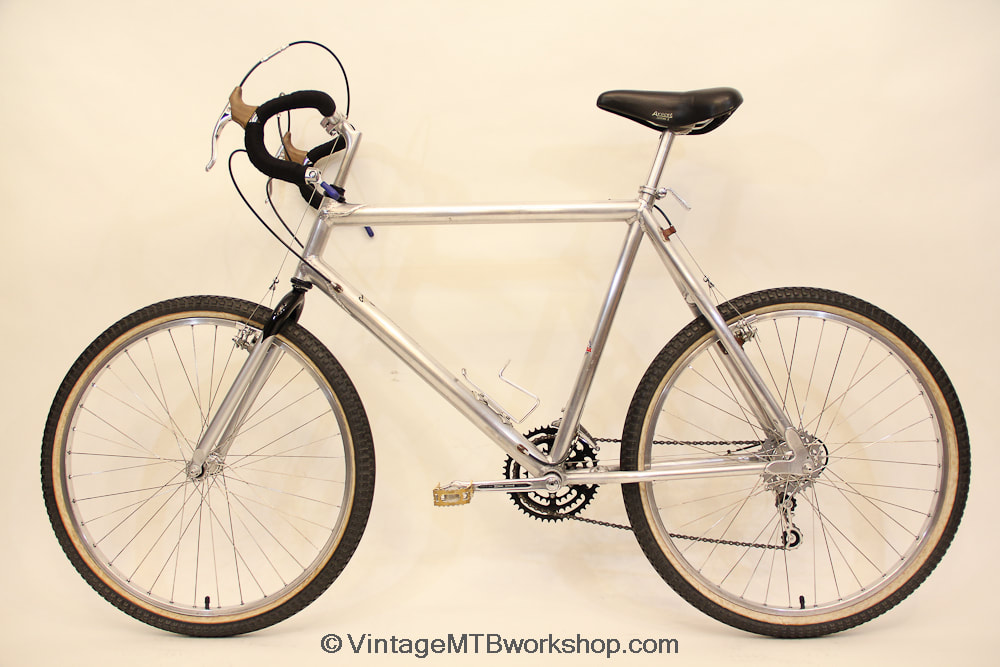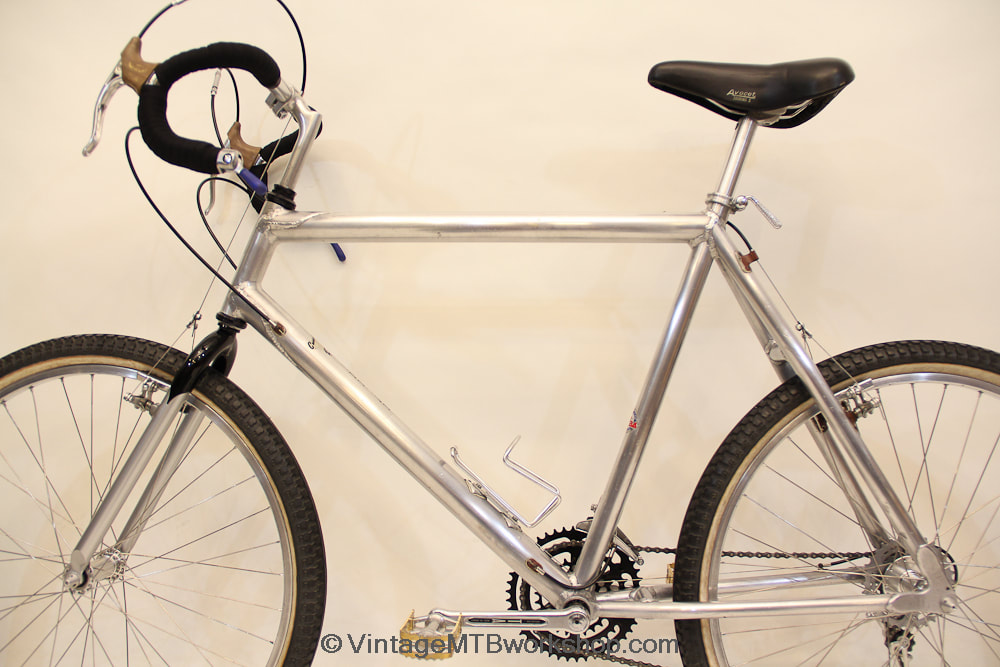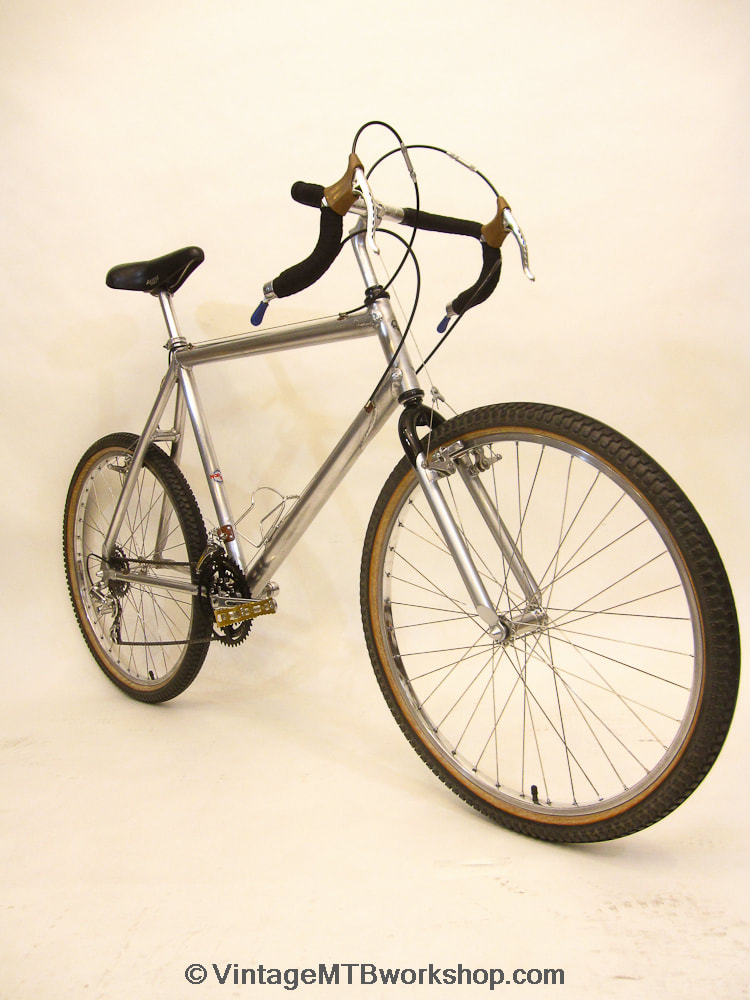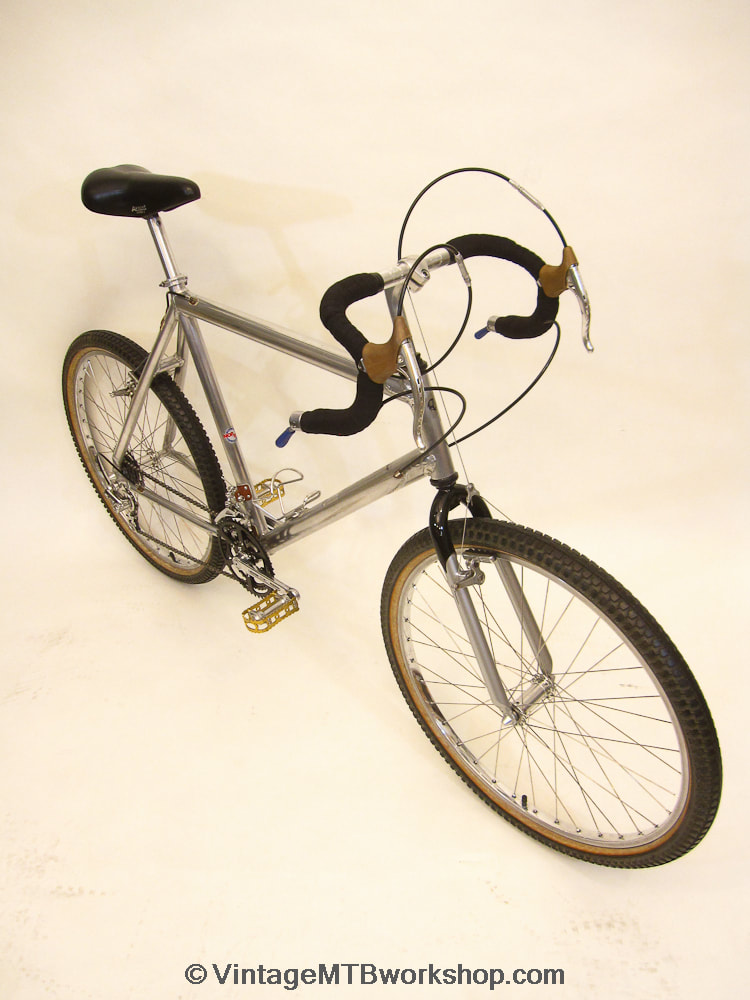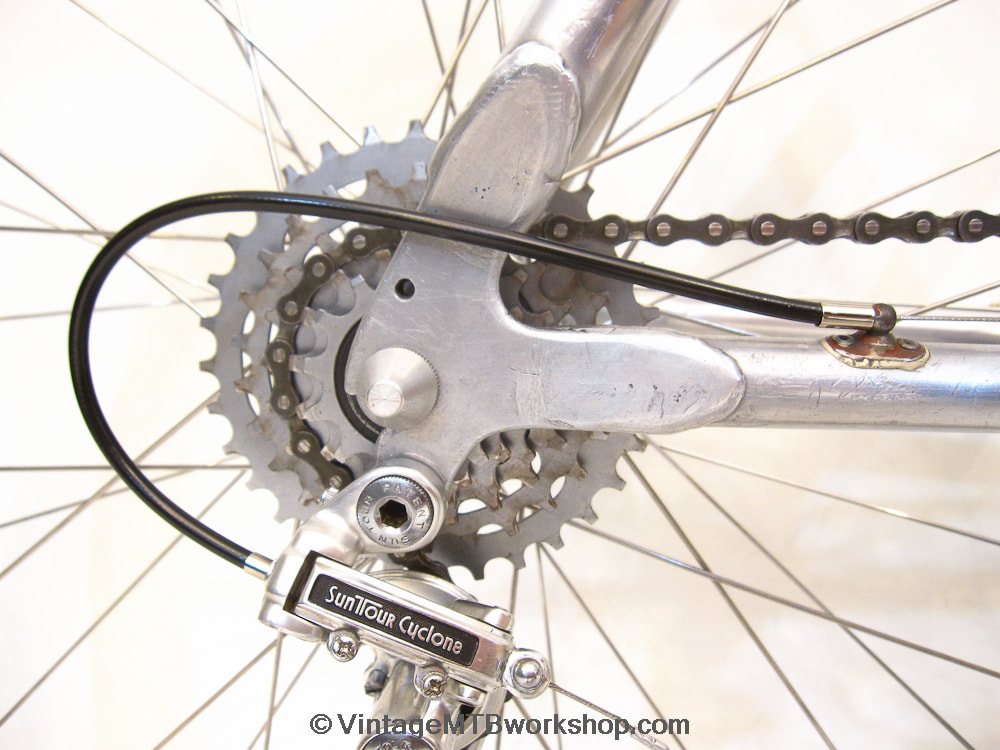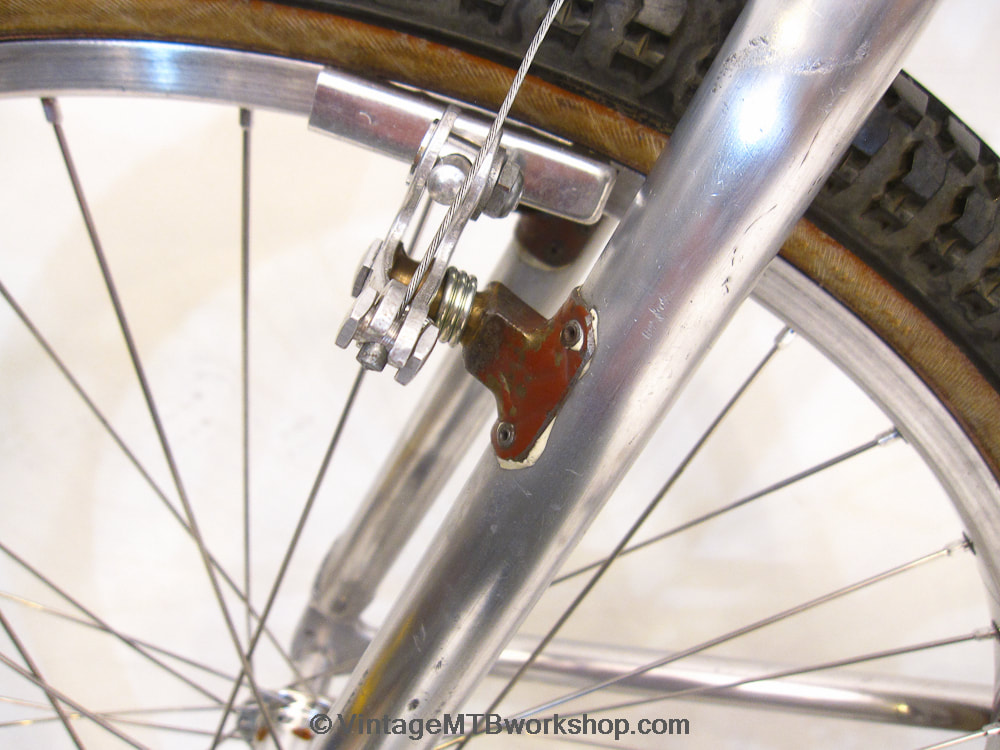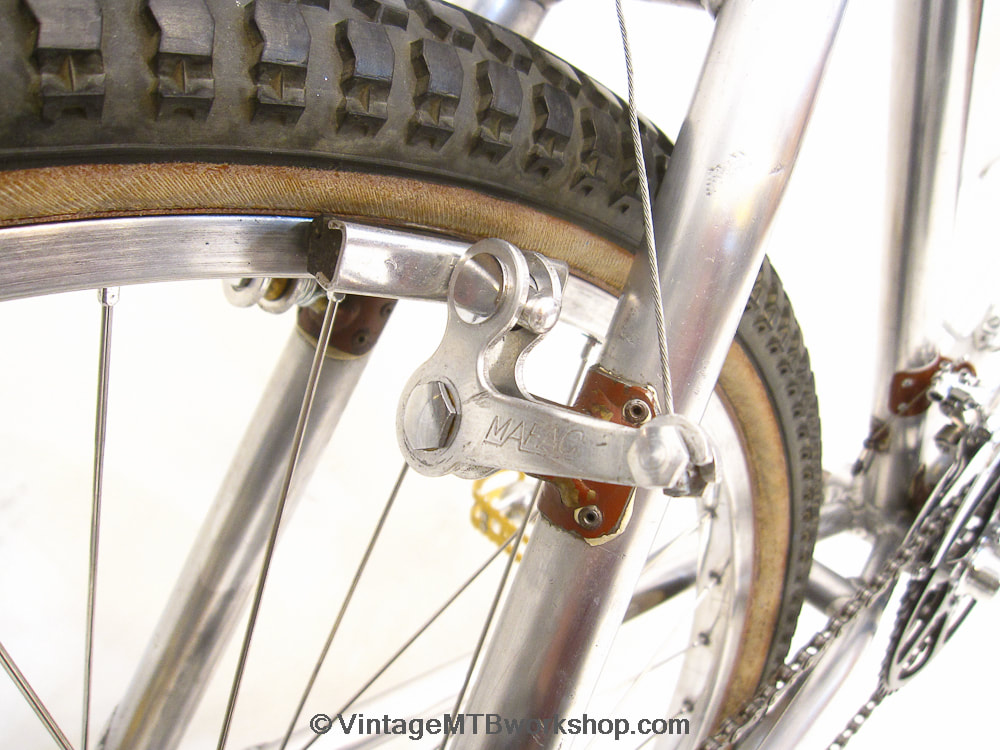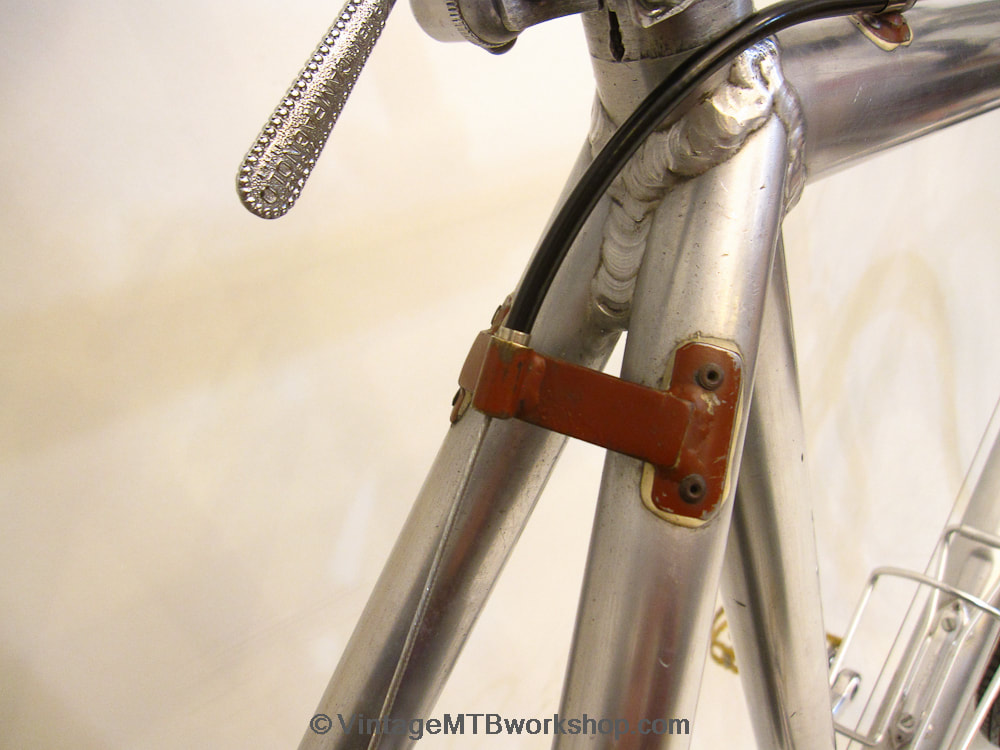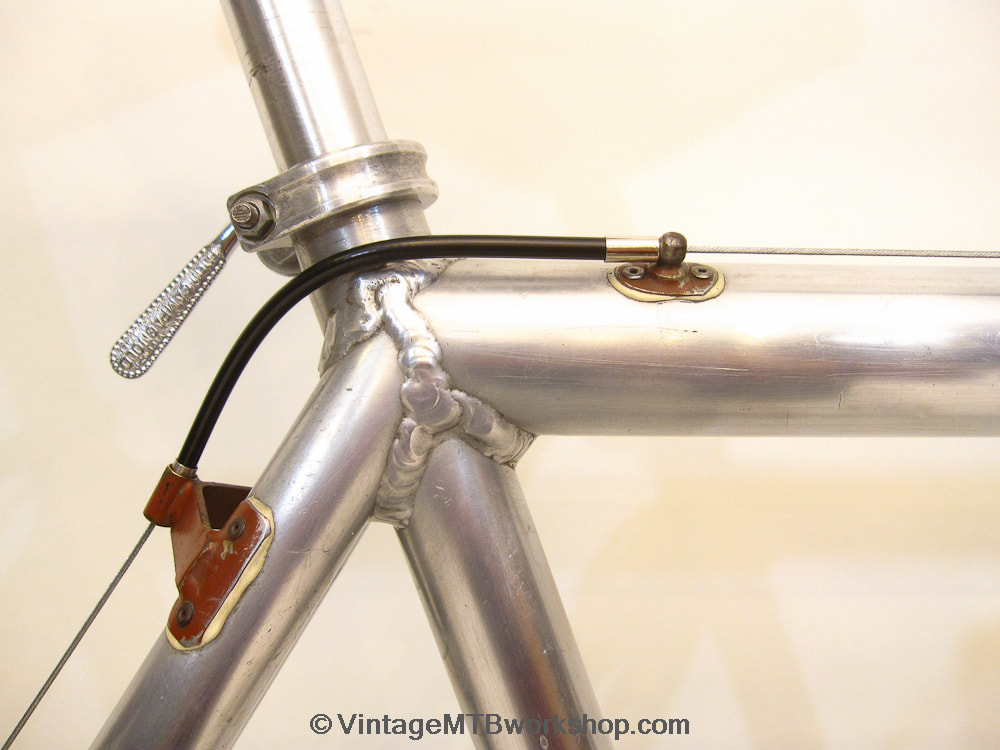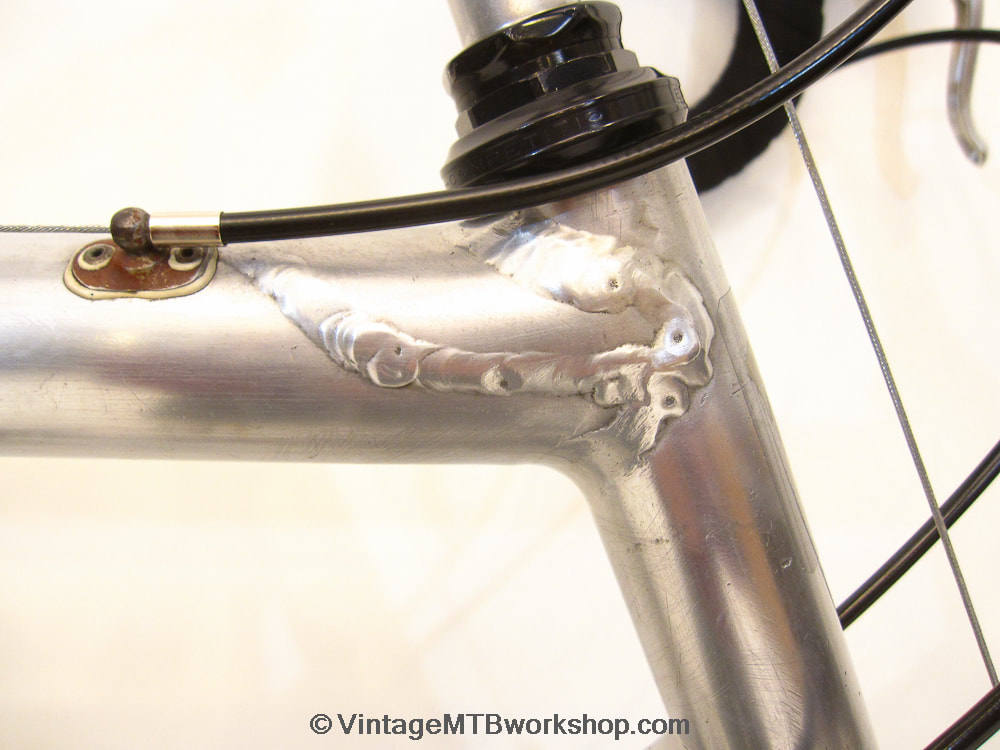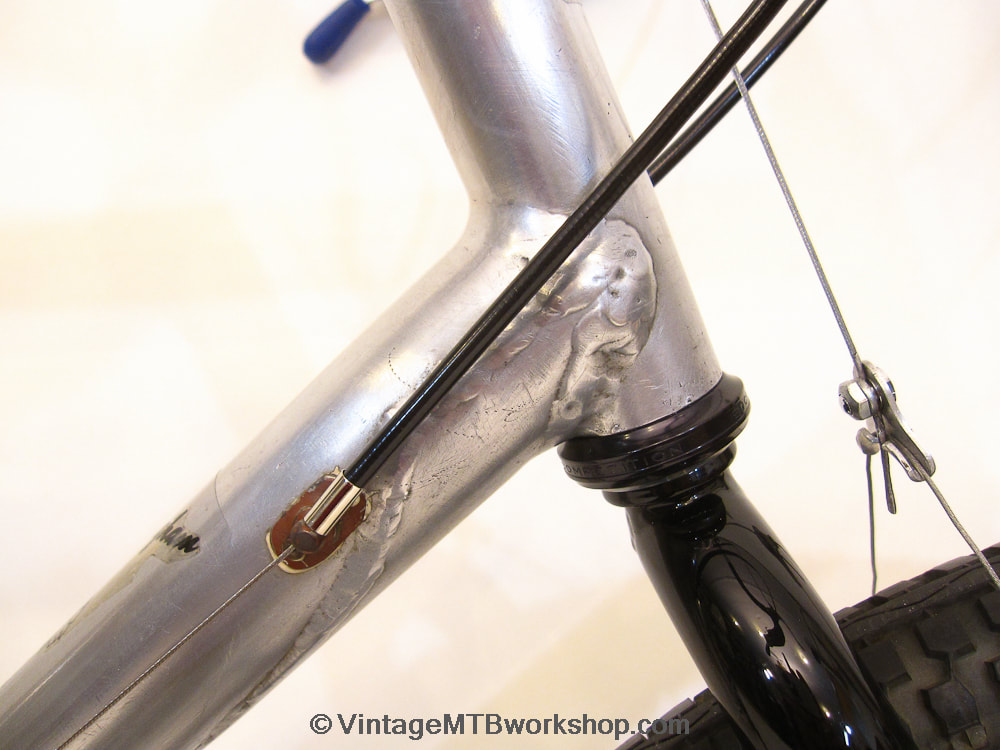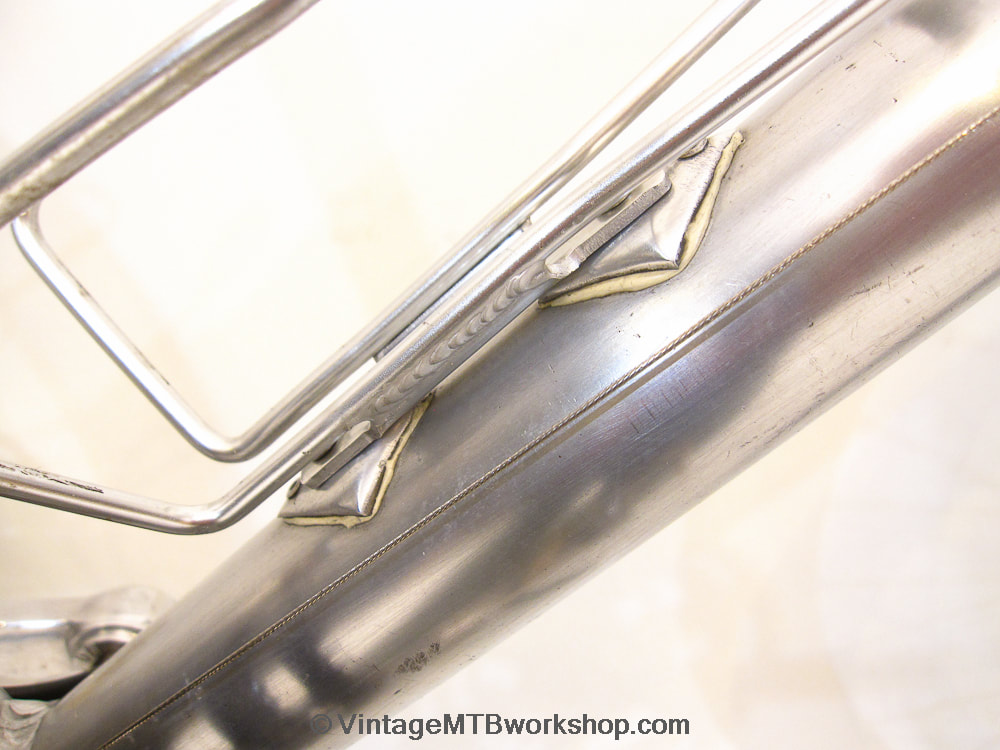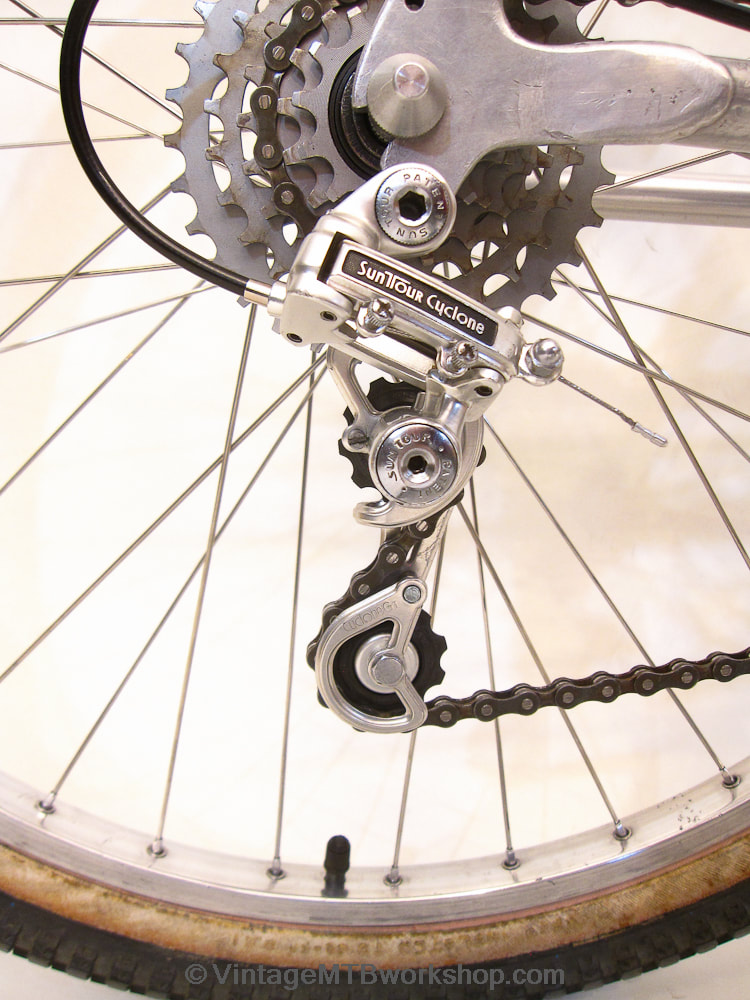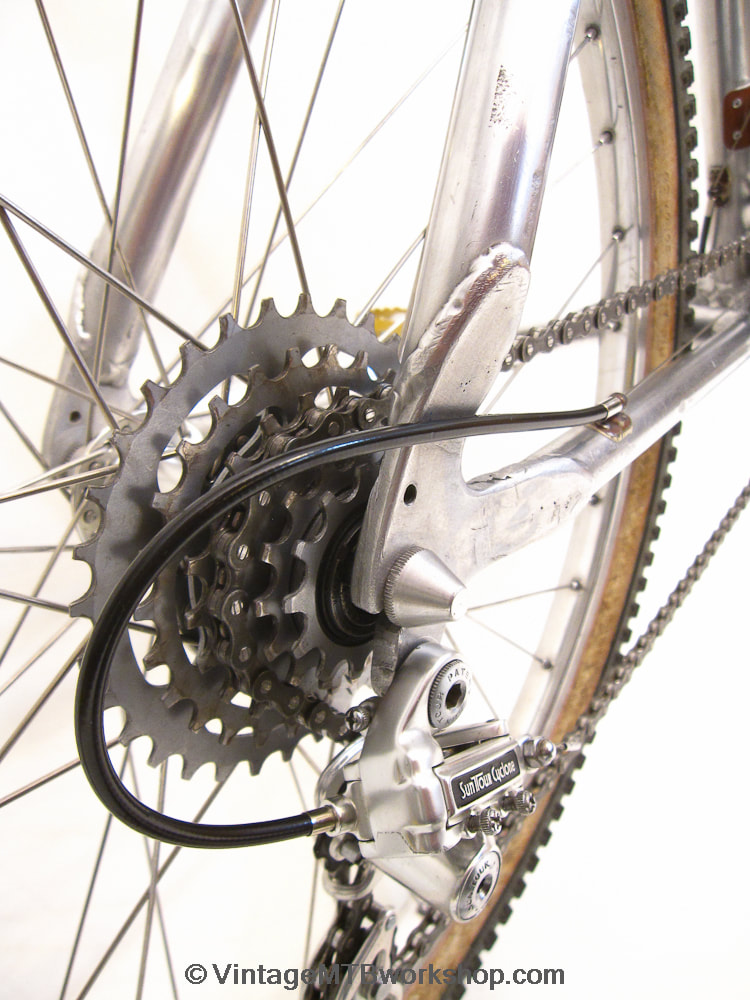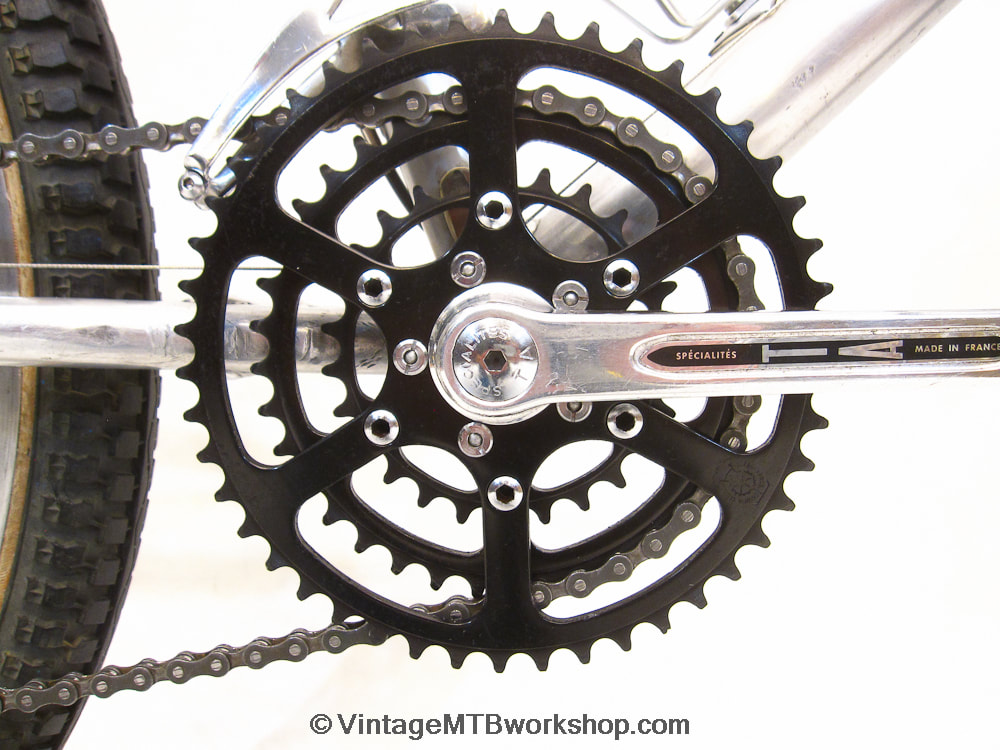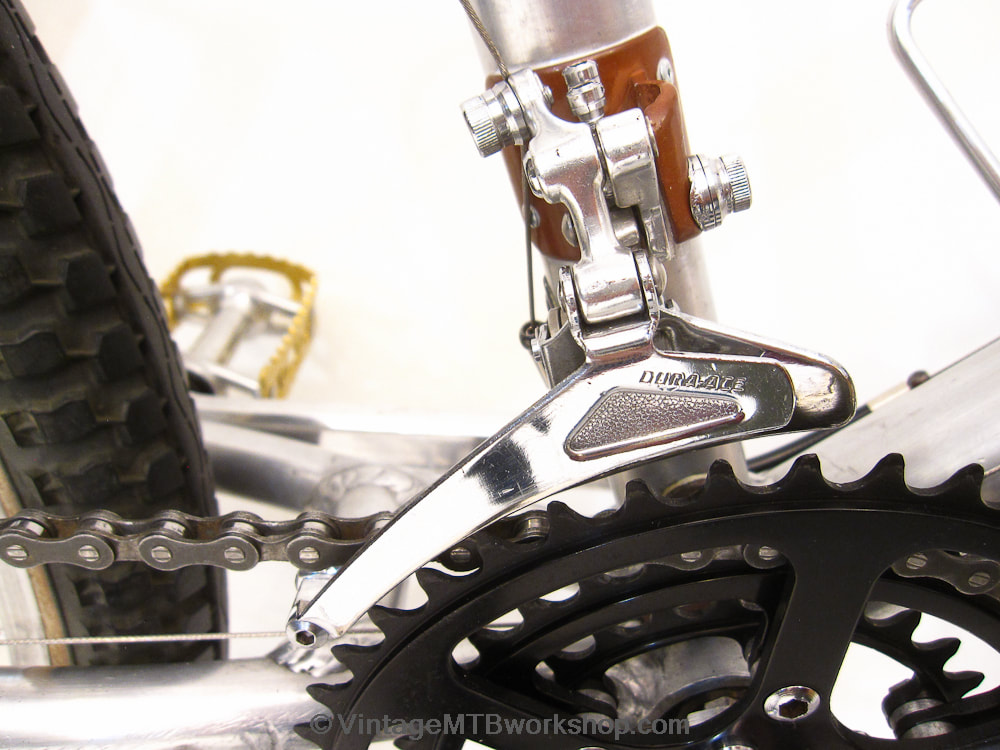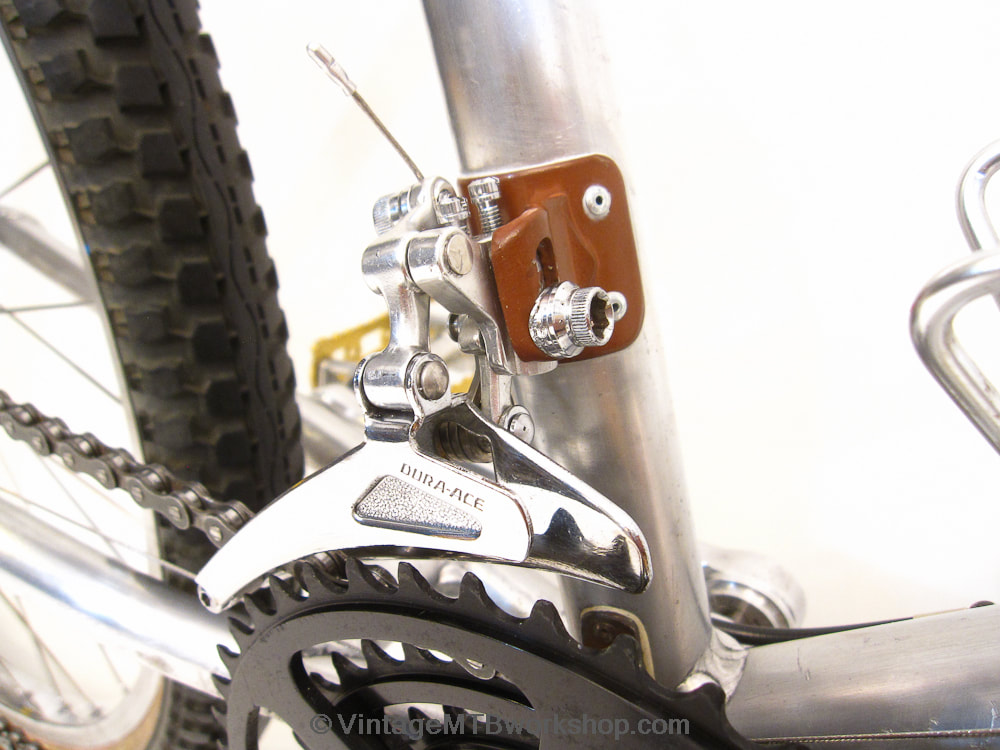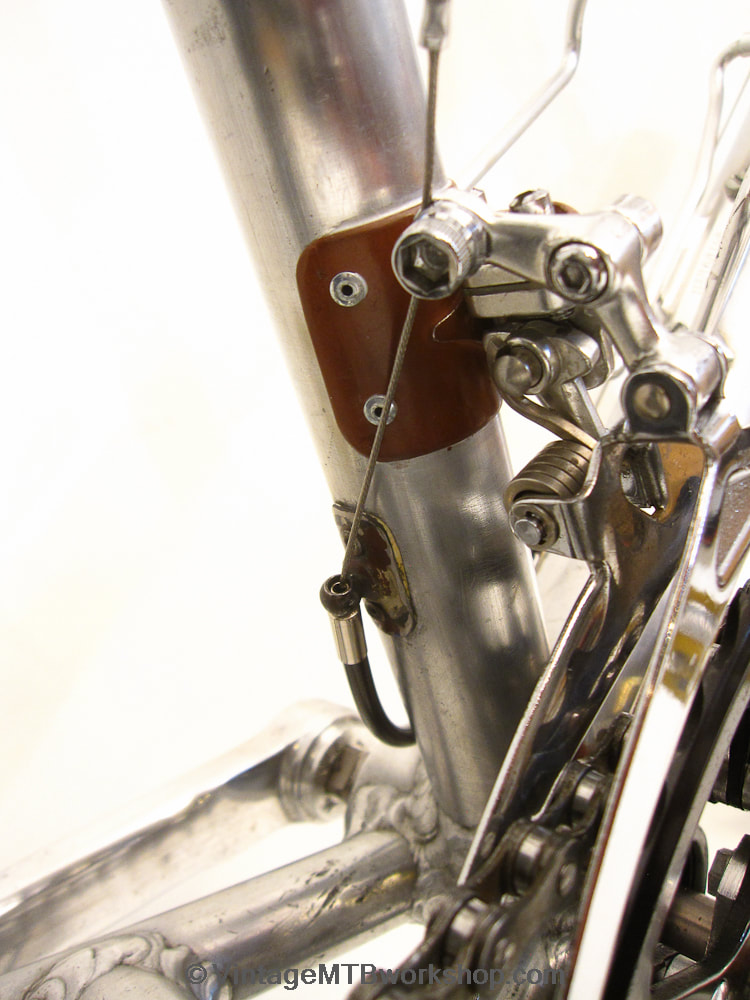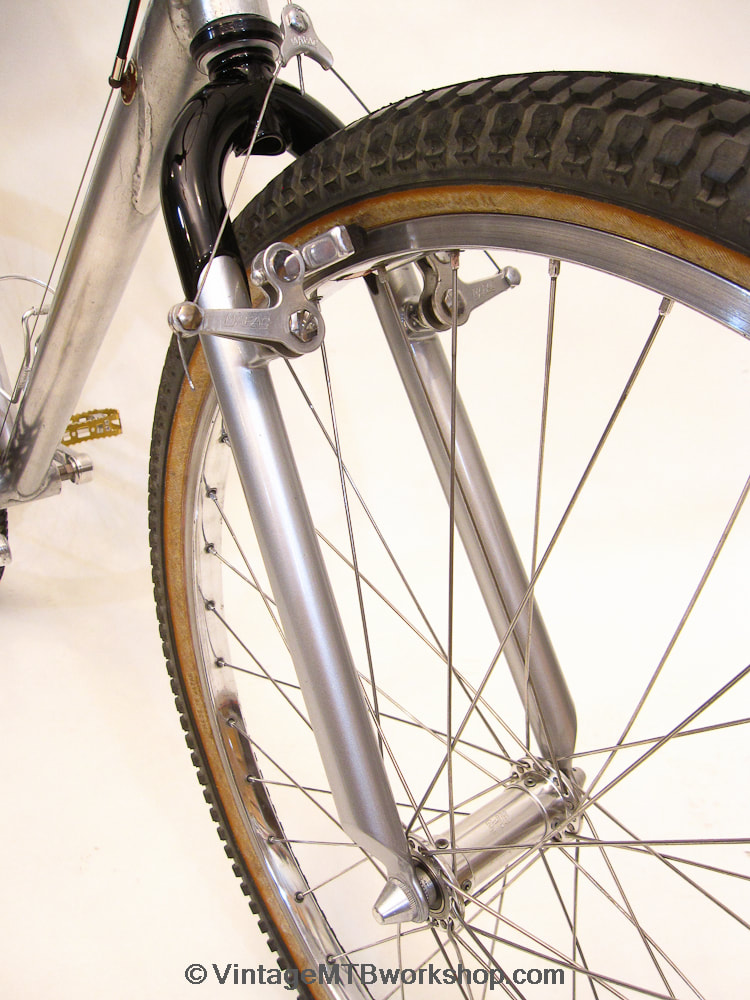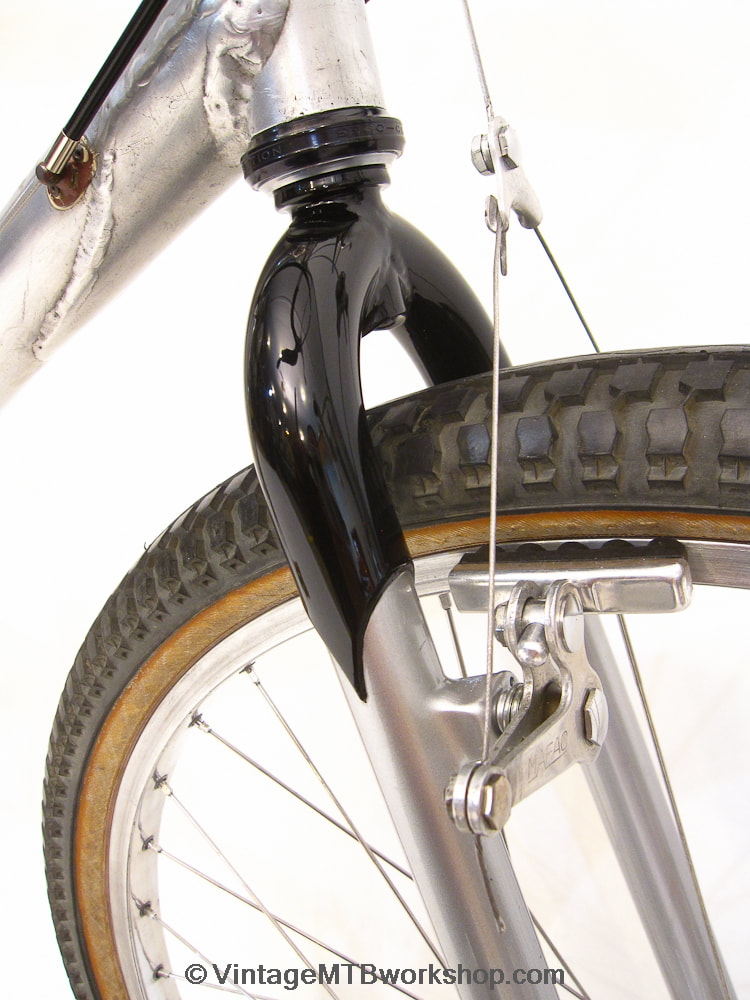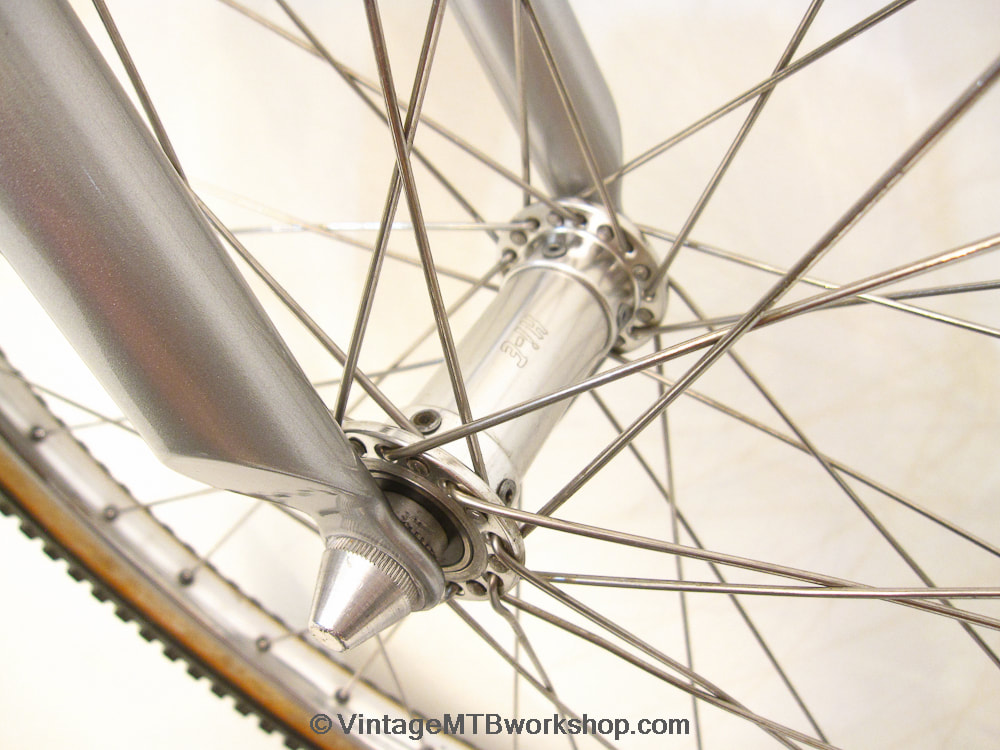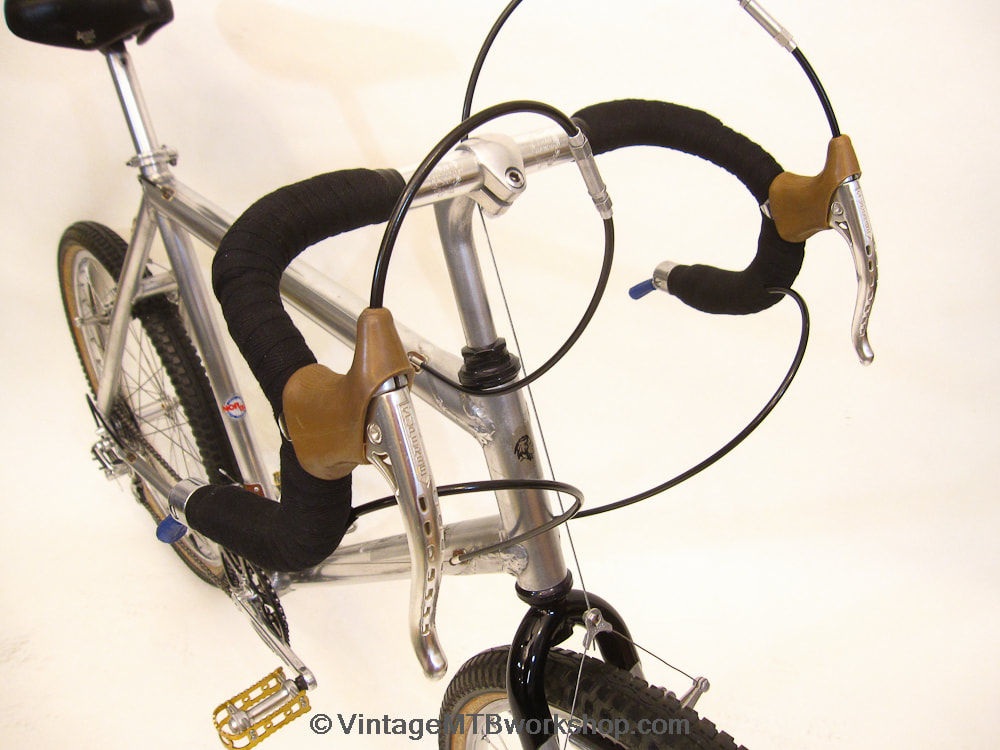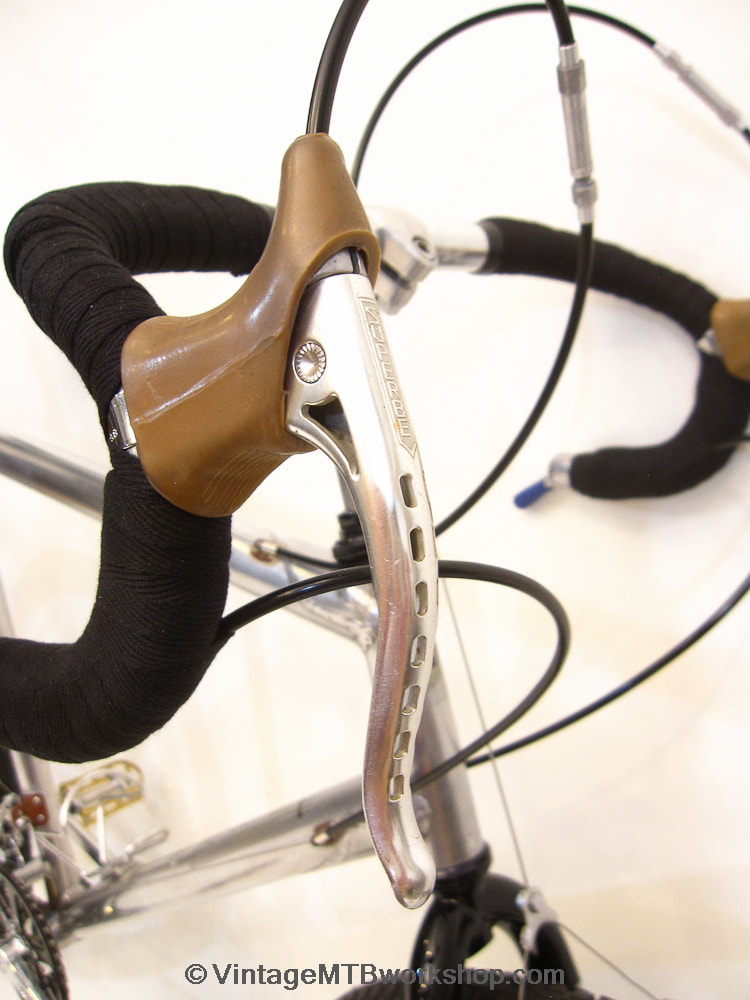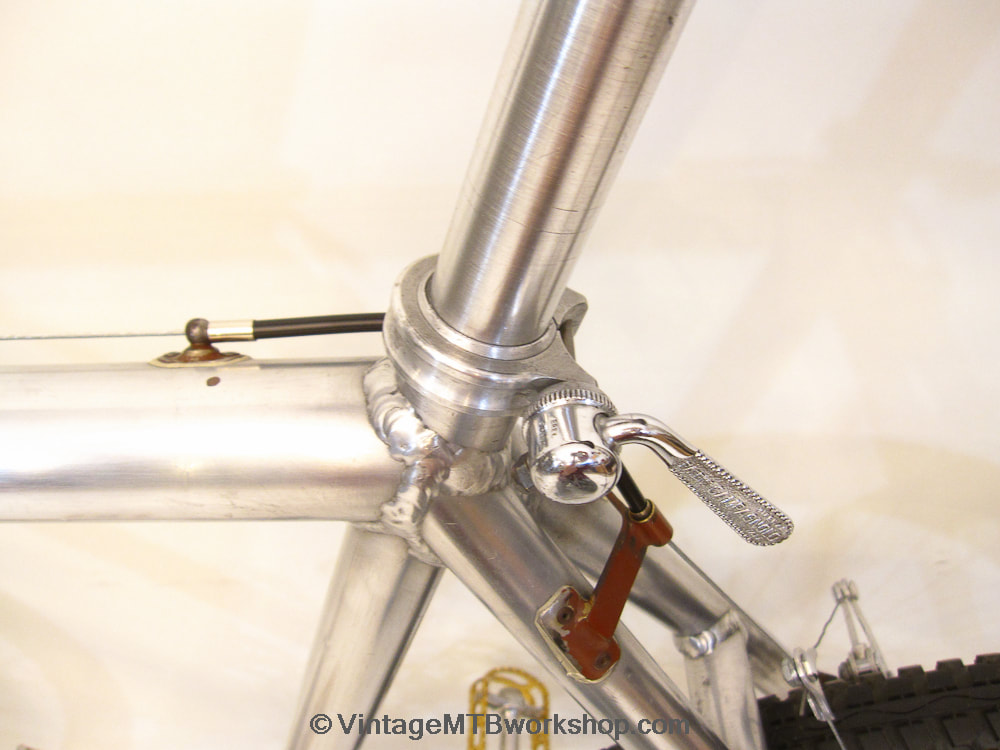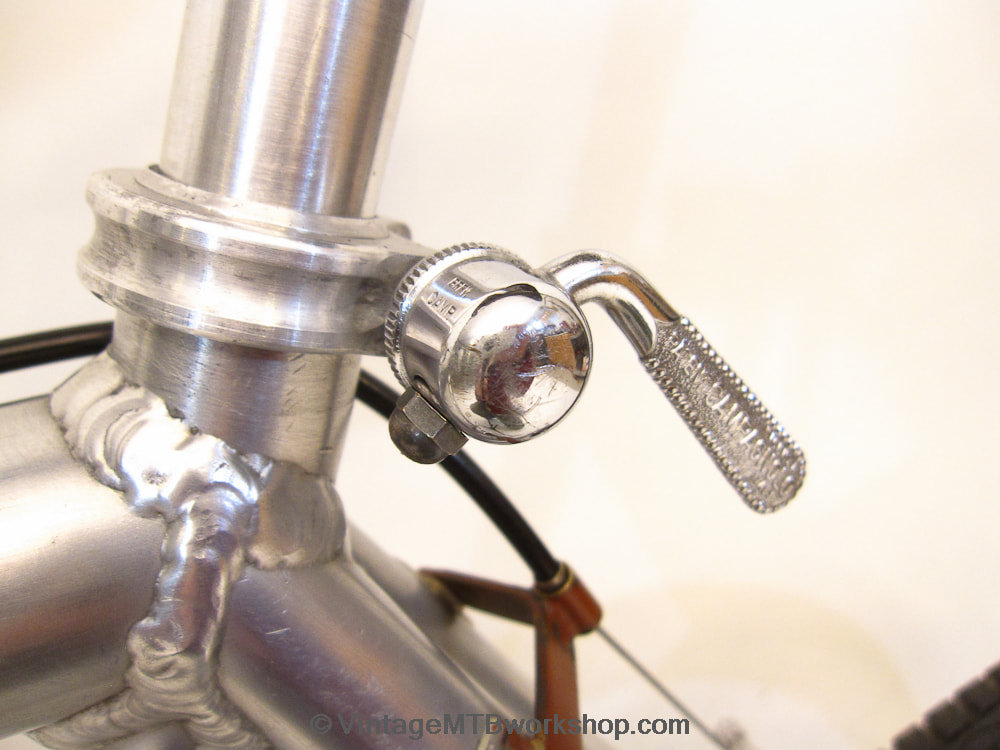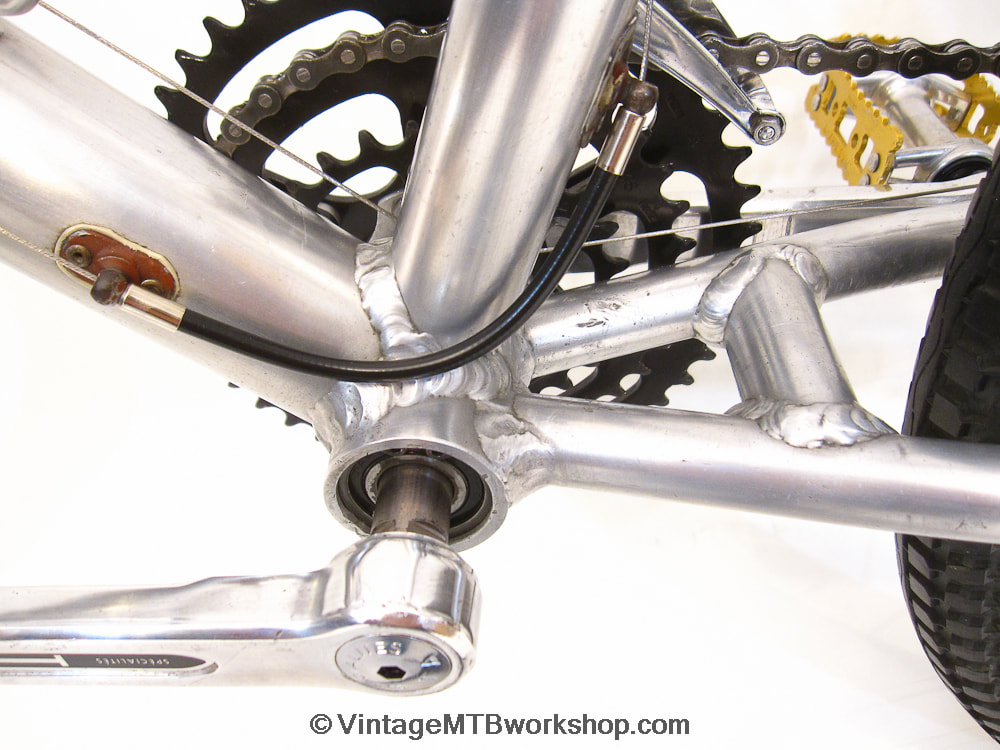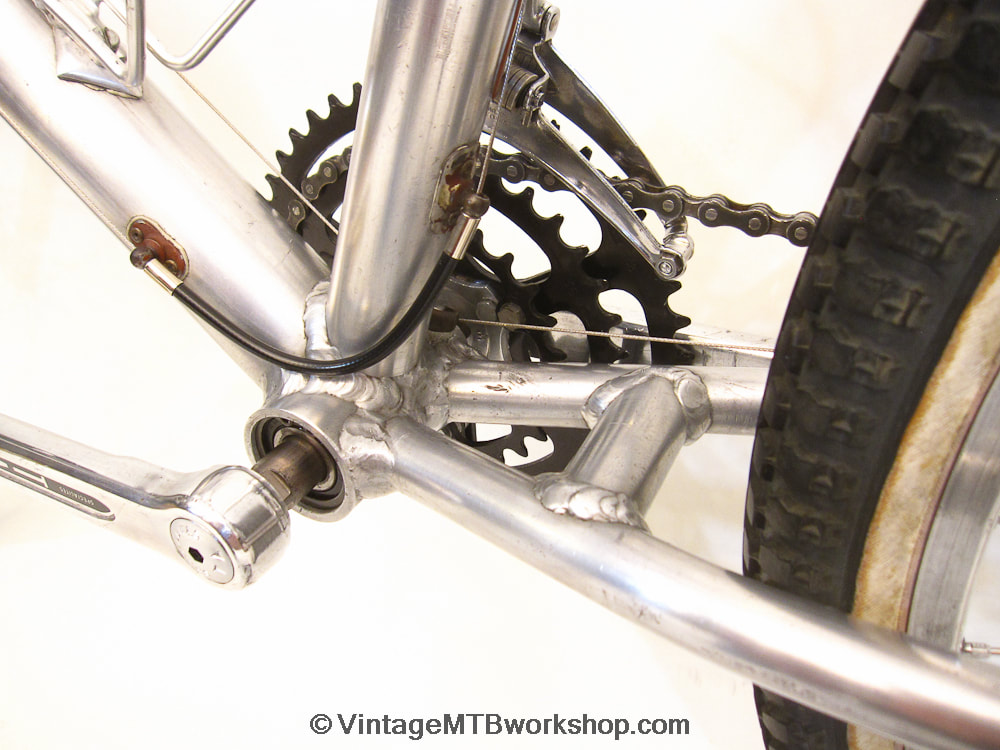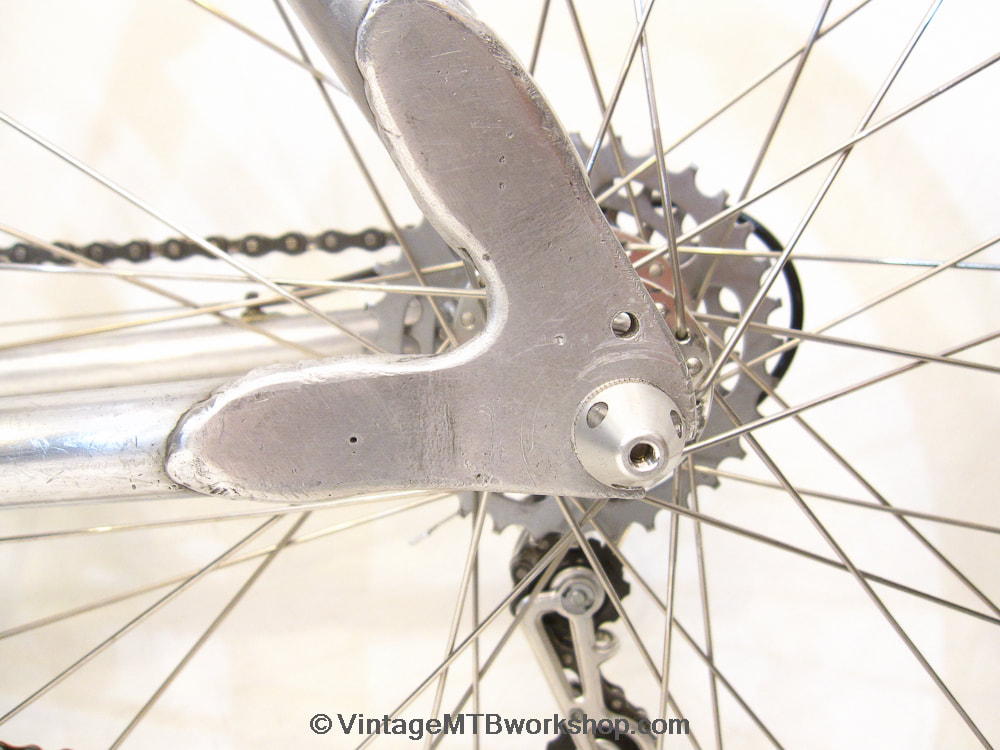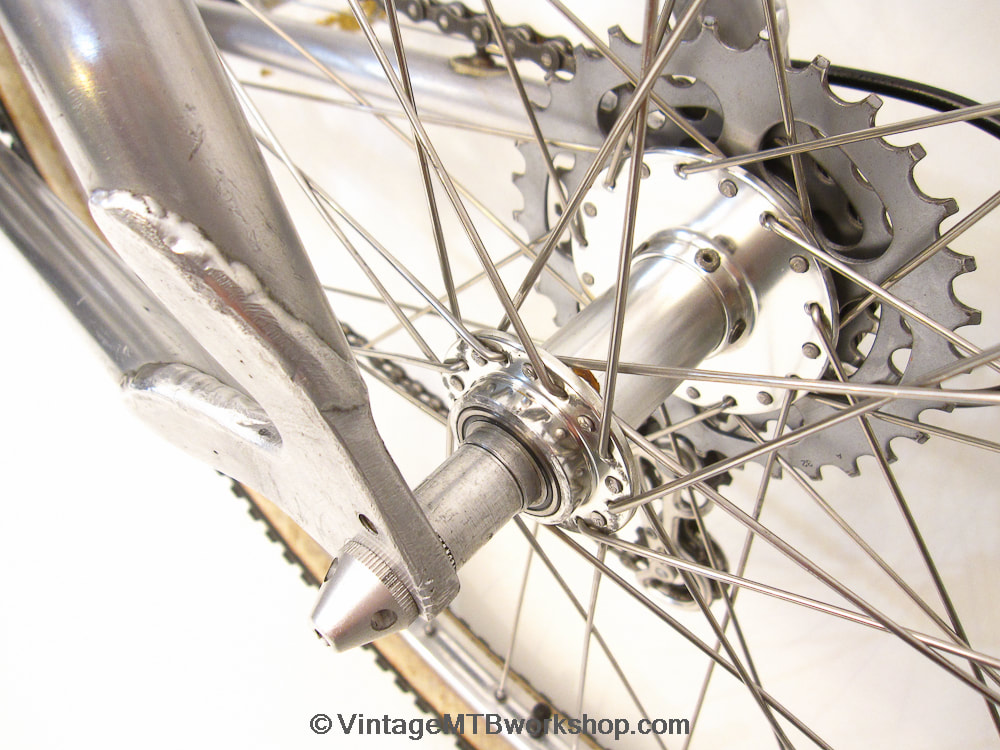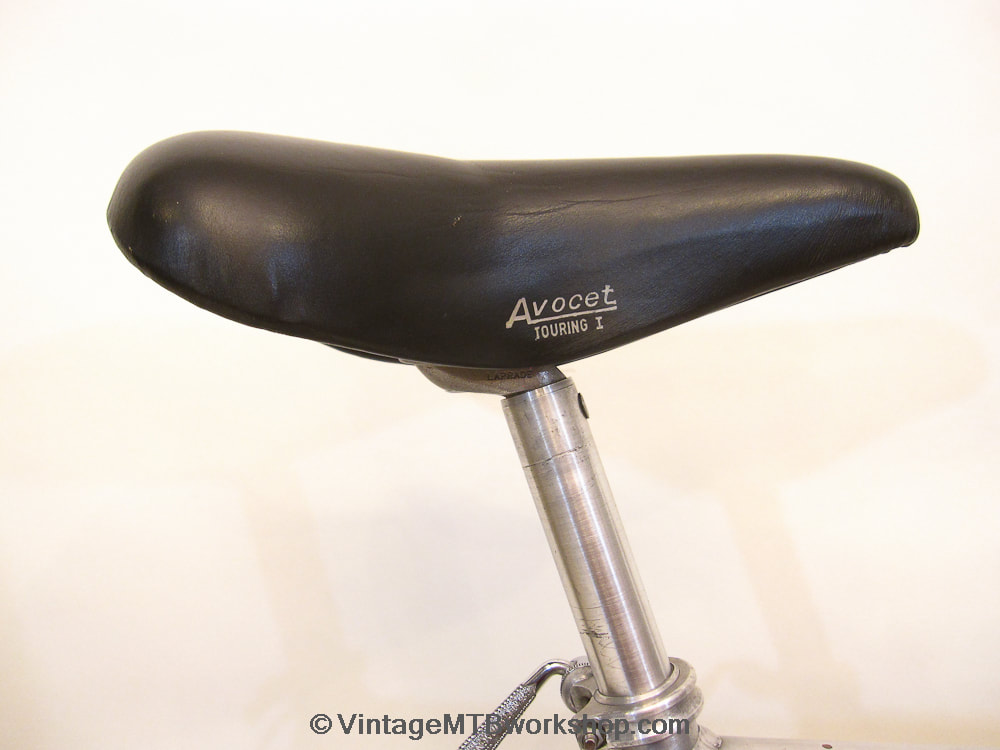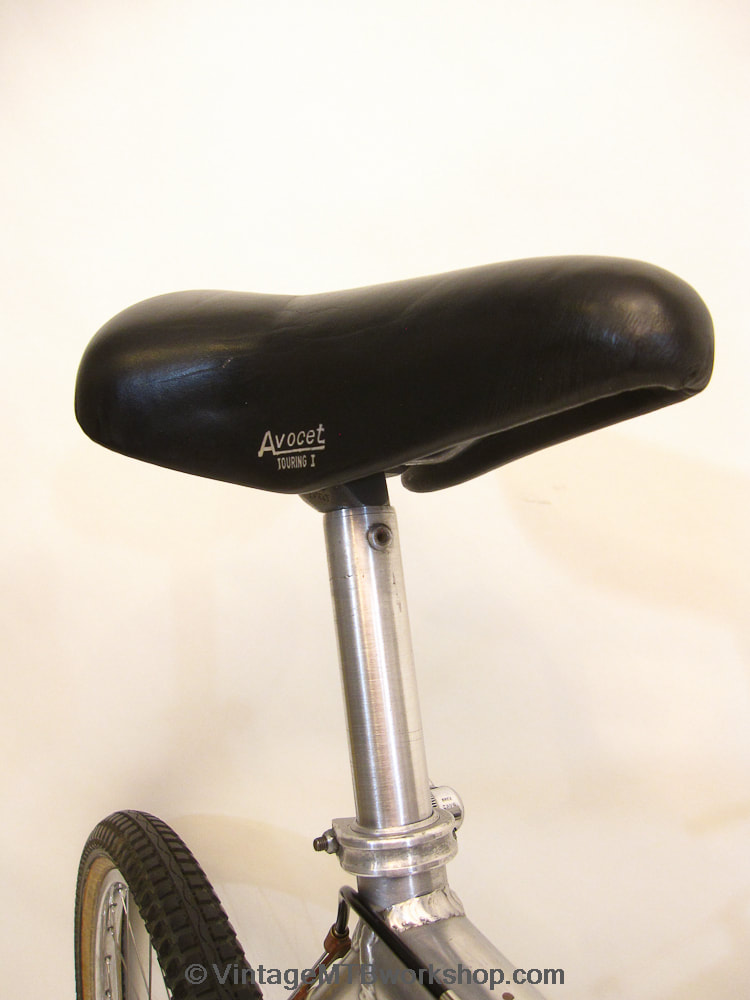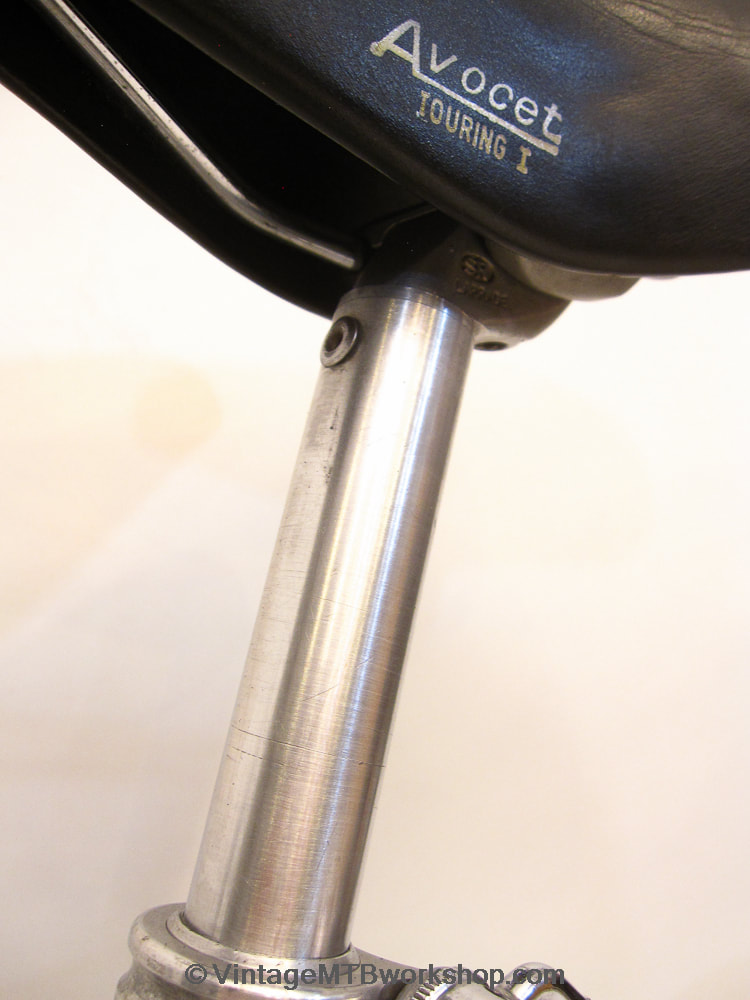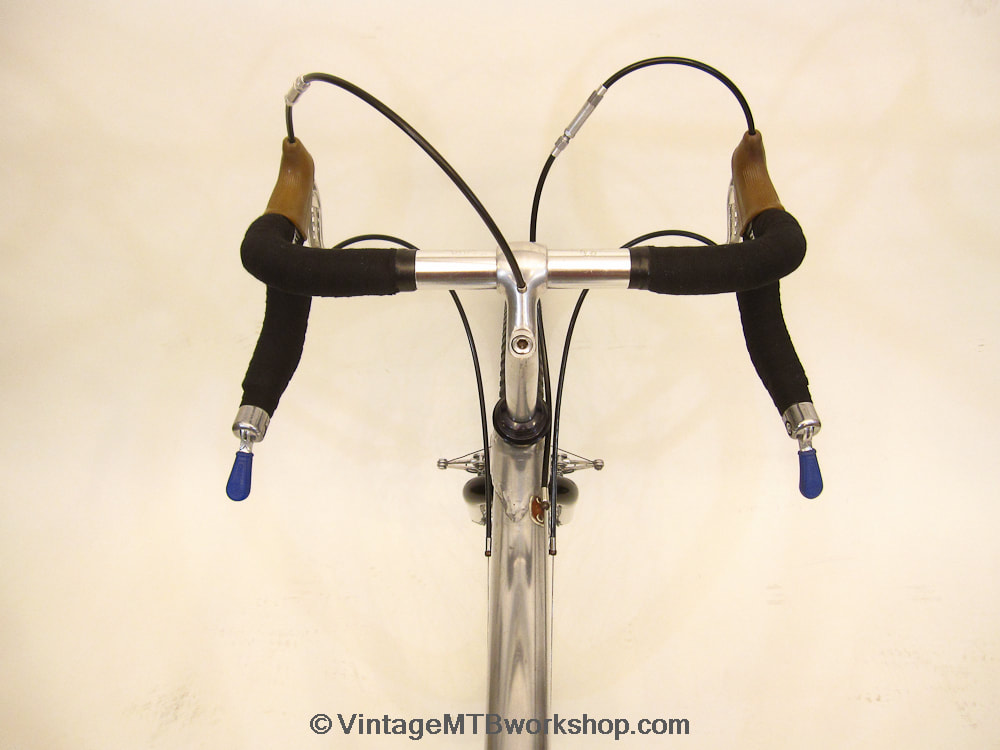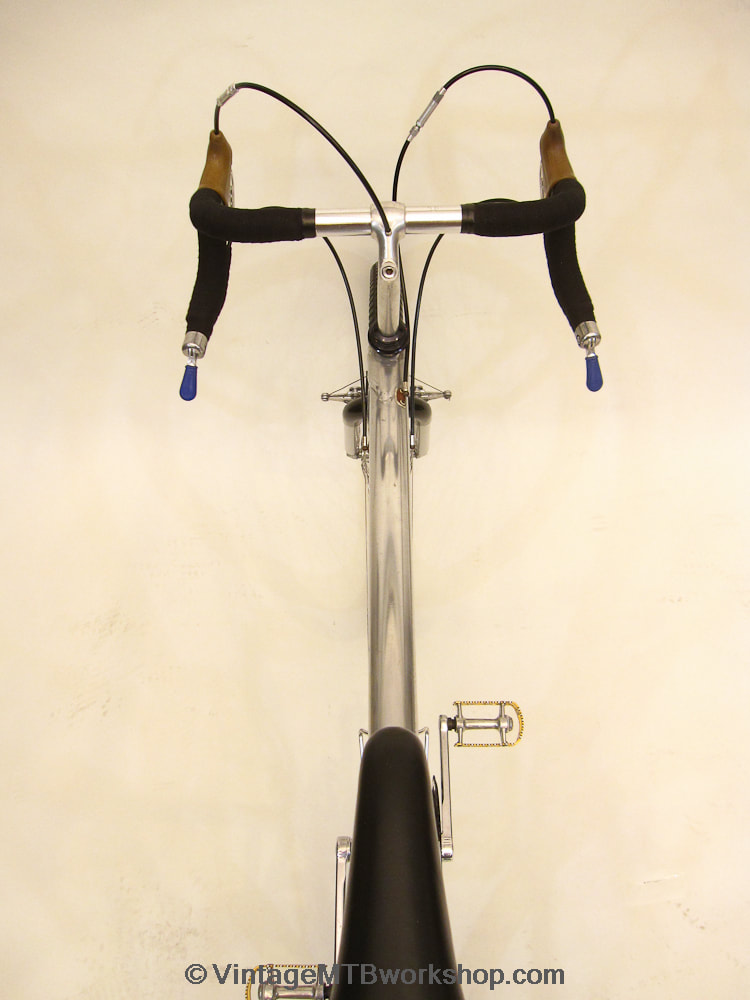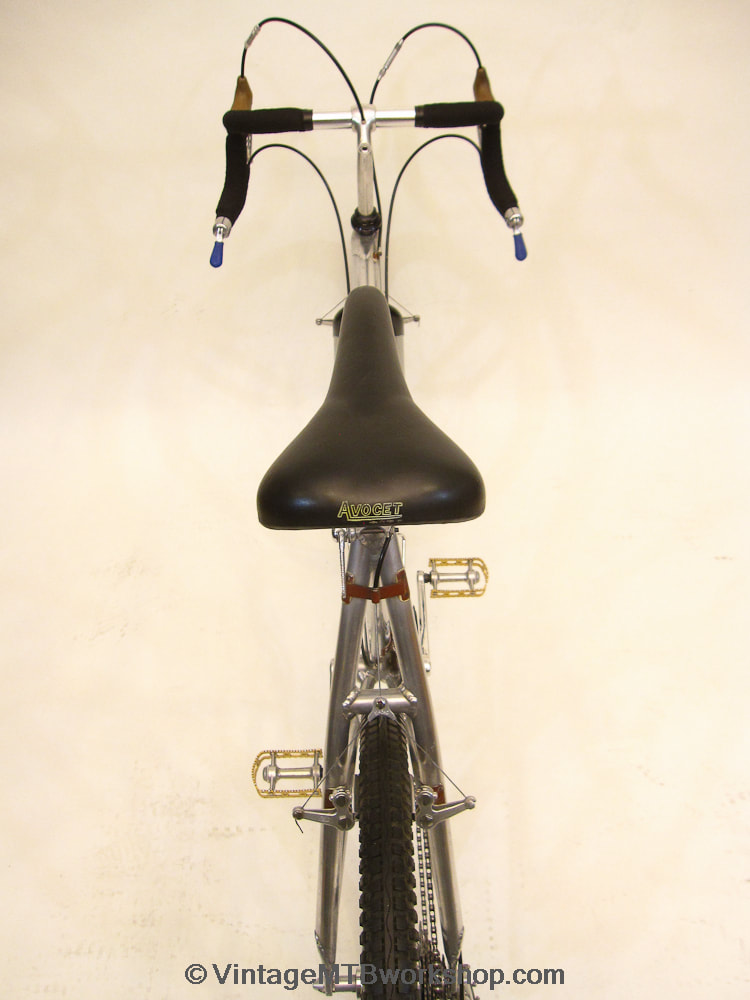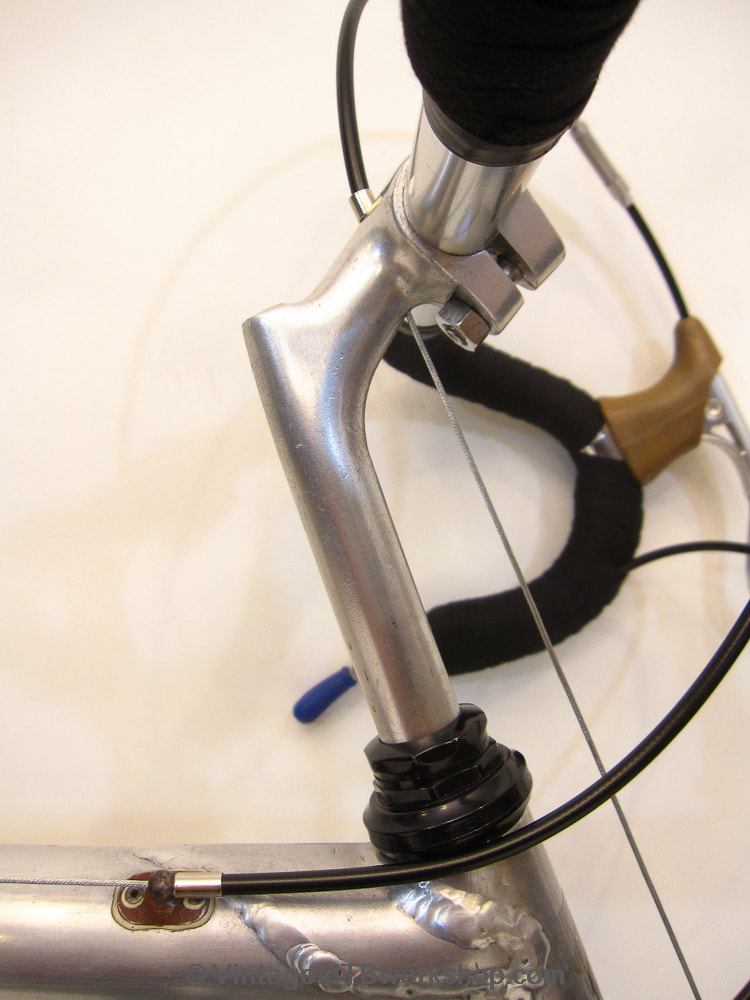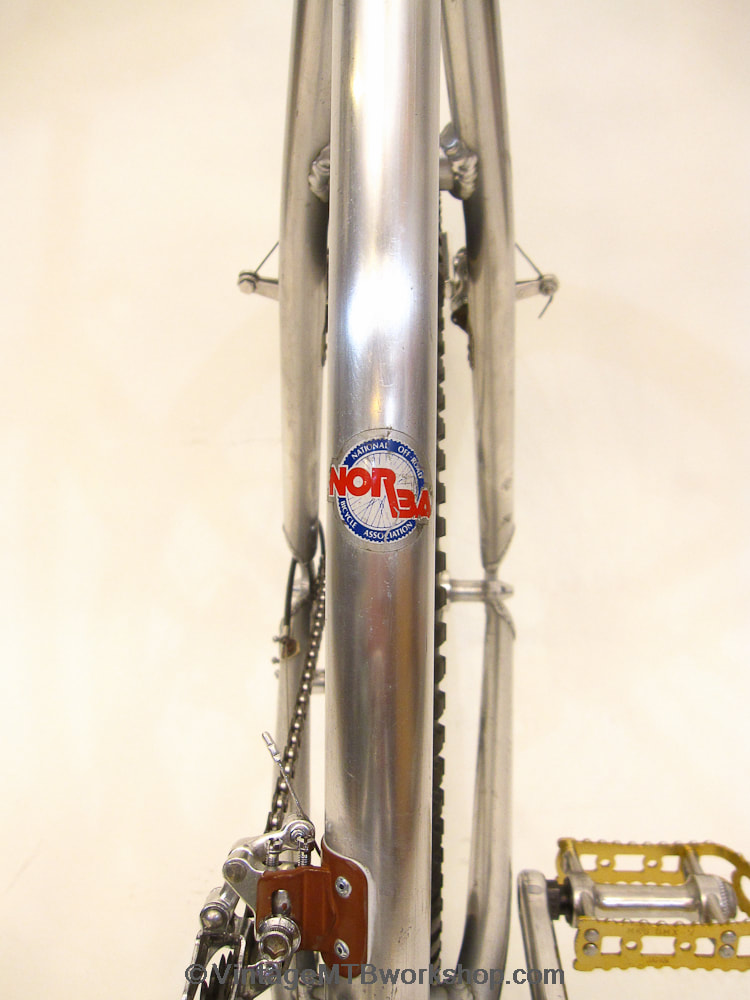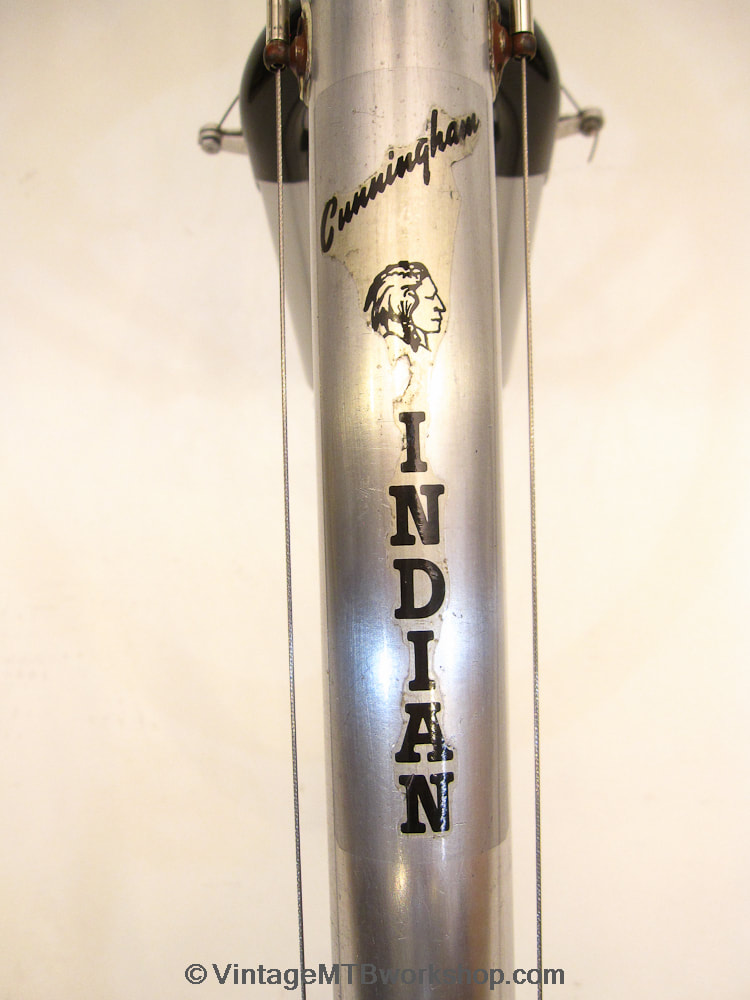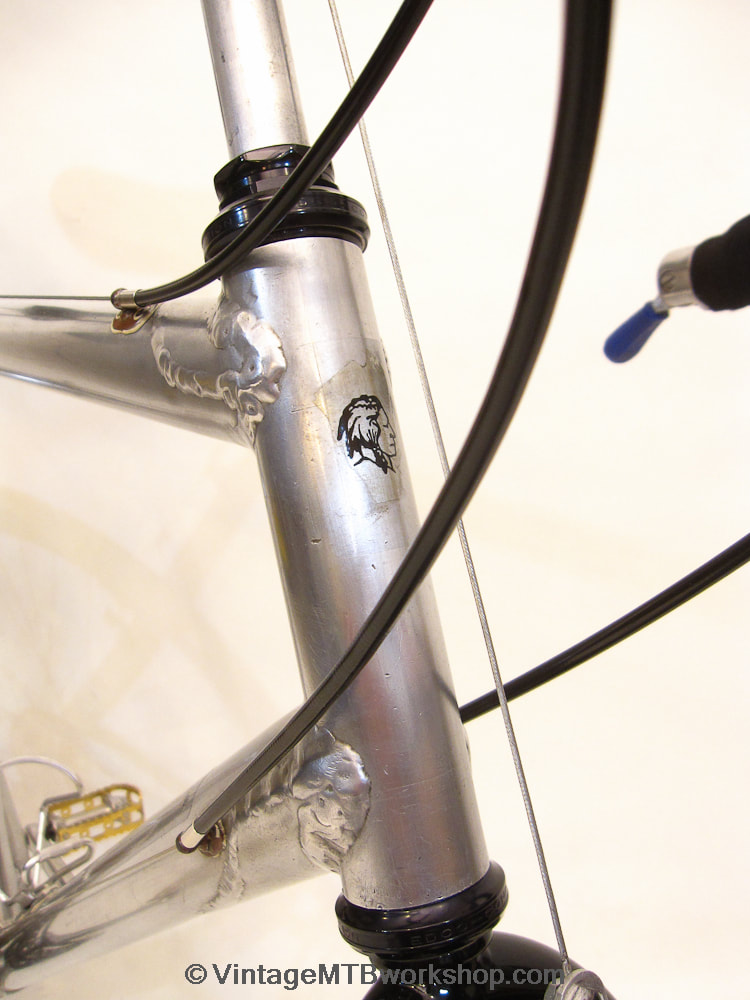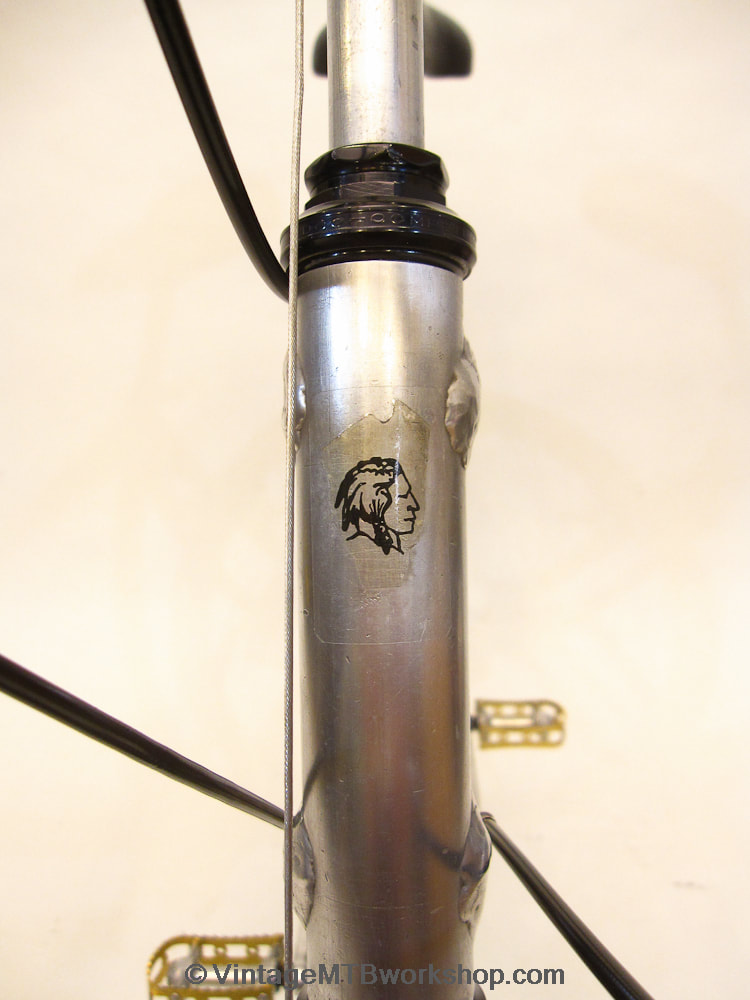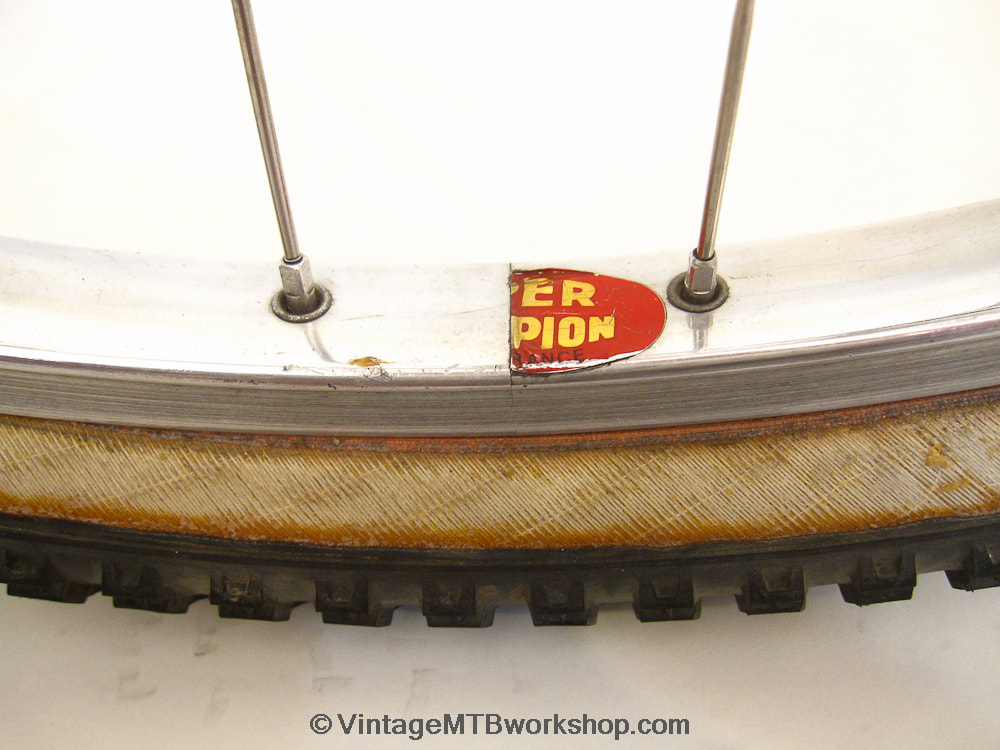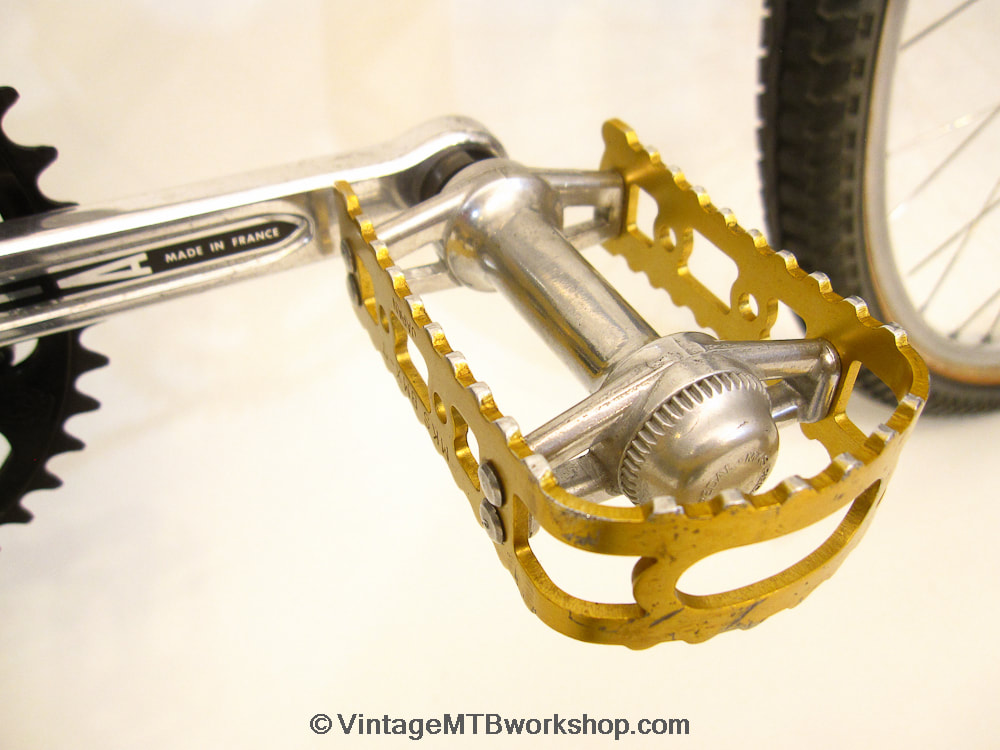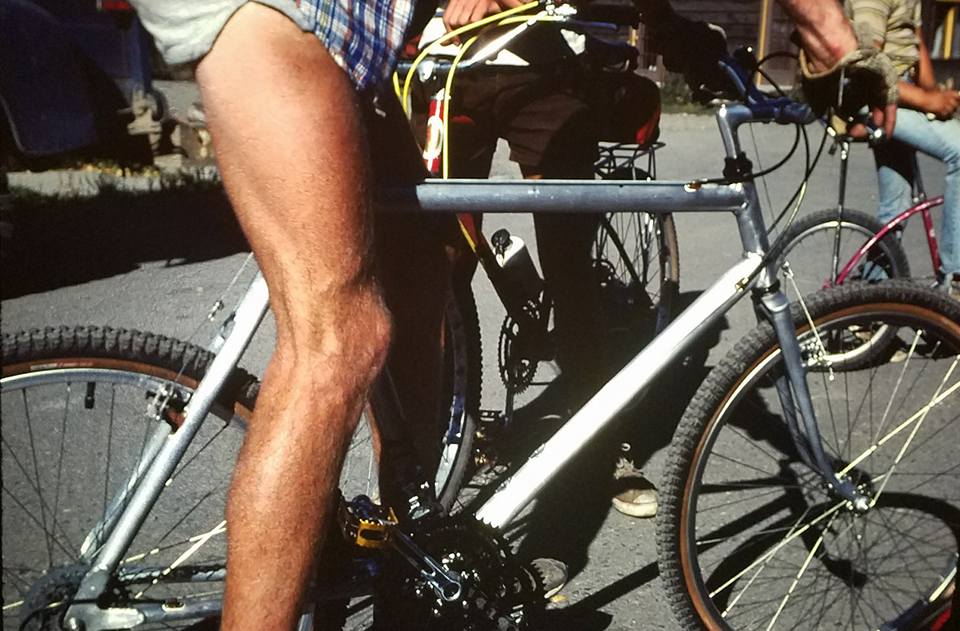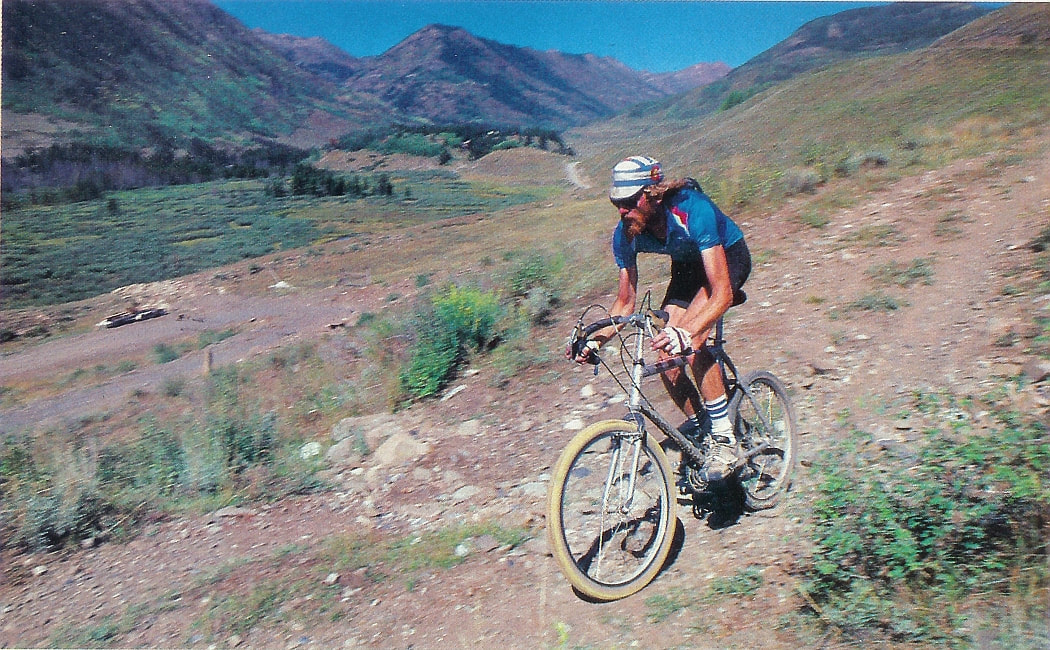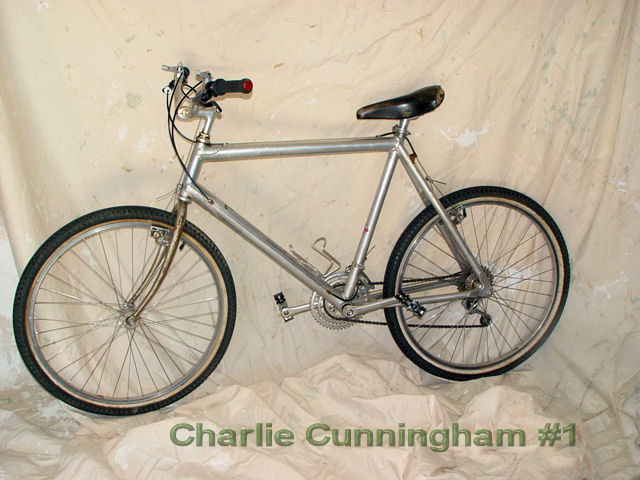1981 Charlie Cunningham Indian #1
During early autumn of 1980, Charlie Cunningham joined other Marin county locals who ventured out to Colorado to ride the Pearl Pass Tour from Crested Butte to Aspen. Charlie brought with him the world's first aluminum mountain bike, dubbed CCPROTO, which he had completed construction of in late 1979. The cutting edge bike impressed local brothers Don and Steve Cook so much that they implored him to build them similar bikes. While Don favored a bike modeled after CCPROTO and would help with its construction, Steve essentially requested an aluminum Ritchey with a conventional diamond frame, cantilever brakes, and a Ritchey biplane fork. In August of 1981, Charlie completed construction of the bikes and the brothers went about exploring the trails of Crested Butte and beyond. However, within a year or so both frames had begun to develop cracks because they had not been heat-treated to restore their strength after welding. The frames were returned to Charlie for repairs and additional gussets, followed by a heat treatment process Charlie had worked out in his back yard. At this time Charlie applied the Cunningham Indian graphics he had developed for subsequent bikes and updated the seatpost collar. Steve's frame returned to Crested Butte during the summer of 1982 and he would continue to use the bike for NORBA mountain bike races and cyclocross events, racking up numerous wins along the way. Steve's highly-visible success with the bike was critical to Charlie's efforts to convince skeptics that aluminum could be durable enough for mountain bikes if designed and constructed properly. At some point Steve lost track of the bike and eventually it turned up at an estate sale in Pueblo, CO.
Although a very early bike, many of its design features would become common place on Charlie's bikes for another ten years. The rear dropout spacing is 136 mm to achieve a symmetric rear wheel with a 6 speed cog set. The bike relies extensively on cable guides and stops which are made from brazed steel parts which are epoxied and riveted to the frame. The one piece, rear-facing dropouts, hollowed out bottom bracket shell and headtube, and aircraft-inspired gussets are signatures of a Cunningham bike.
At the bottom of the gallery are two photos of the bike from the early 1980s. The first shows the bike in the first year, with Ritchey biplane fork and no graphics or reinforcement gussets. The second photo, by David Epperson, shows the bike being raced with a Type II fork and drop bars in Crested Butte along the Slate River. The final photos shows the condition of the bike as it was eventually found.
More information about Charlie Cunningham bicycles can be found on the Charlie Cunningham Photo Archive page.
Although a very early bike, many of its design features would become common place on Charlie's bikes for another ten years. The rear dropout spacing is 136 mm to achieve a symmetric rear wheel with a 6 speed cog set. The bike relies extensively on cable guides and stops which are made from brazed steel parts which are epoxied and riveted to the frame. The one piece, rear-facing dropouts, hollowed out bottom bracket shell and headtube, and aircraft-inspired gussets are signatures of a Cunningham bike.
At the bottom of the gallery are two photos of the bike from the early 1980s. The first shows the bike in the first year, with Ritchey biplane fork and no graphics or reinforcement gussets. The second photo, by David Epperson, shows the bike being raced with a Type II fork and drop bars in Crested Butte along the Slate River. The final photos shows the condition of the bike as it was eventually found.
More information about Charlie Cunningham bicycles can be found on the Charlie Cunningham Photo Archive page.
The Build
Year: 1981
S/N: #1 Frame: Cunningham Indian Fork: Type II Stem: SR Forged Headset: Edco Competition Bottom Bracket: Cartridge Bearing Phil Spindle Handlebar: SR Sakae Road Champion Shifters: Campagnolo Barcon Front Derailleur: Shimano Dura Ace EX Rear Derailleur: Suntour Cyclone GT Brake Levers: Suntour Surperbe Front Brake: Mafac Tandem Cantilever Rear Brake: Mafac Tandem Cantilever Crankset: T. A. Specialties Chainrings: T. A. Specialties 26-36-46 Pedals: MKS BMX-7 Hubs: Cunningham Modified Hi-E Rims: Super Champion Bontrager Cut-Down Tires: CyclePro Snakebelly Wheel QR: Cunningham Slo-Release Seatpost: Cunningham Modified SR Laprade Saddle: Avocet Touring I Seatpost QR: Modified Campagnolo Bar Tape: Newbaums Chain: Sachs Cogs: Suntour Winner Freewheel Bottle Cage: Specialized |
